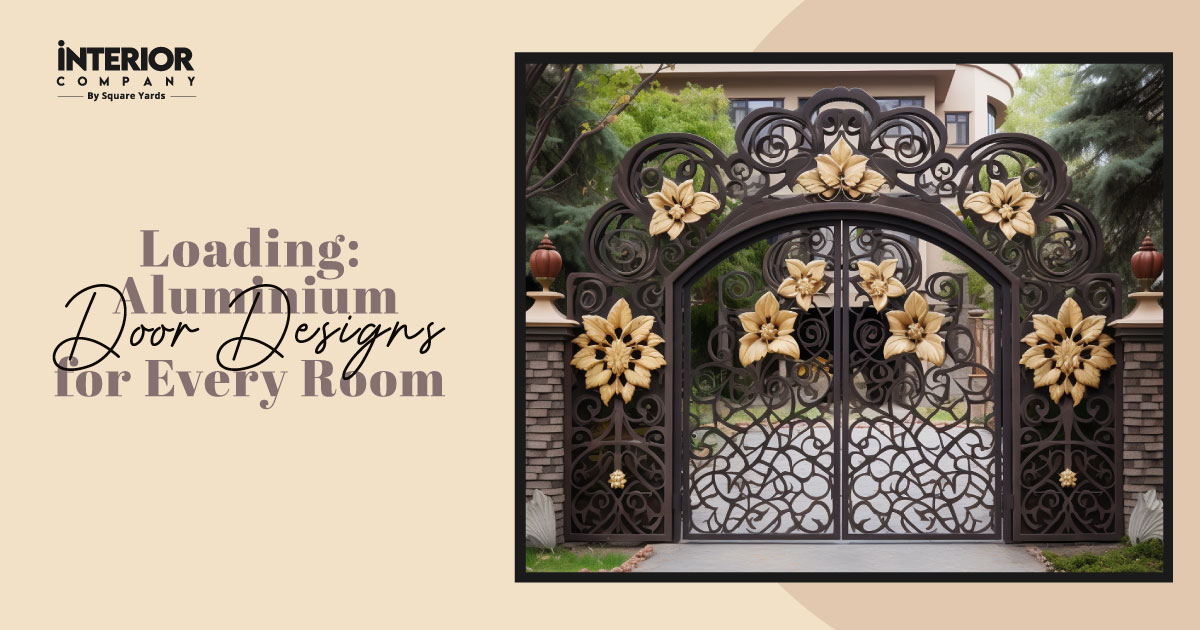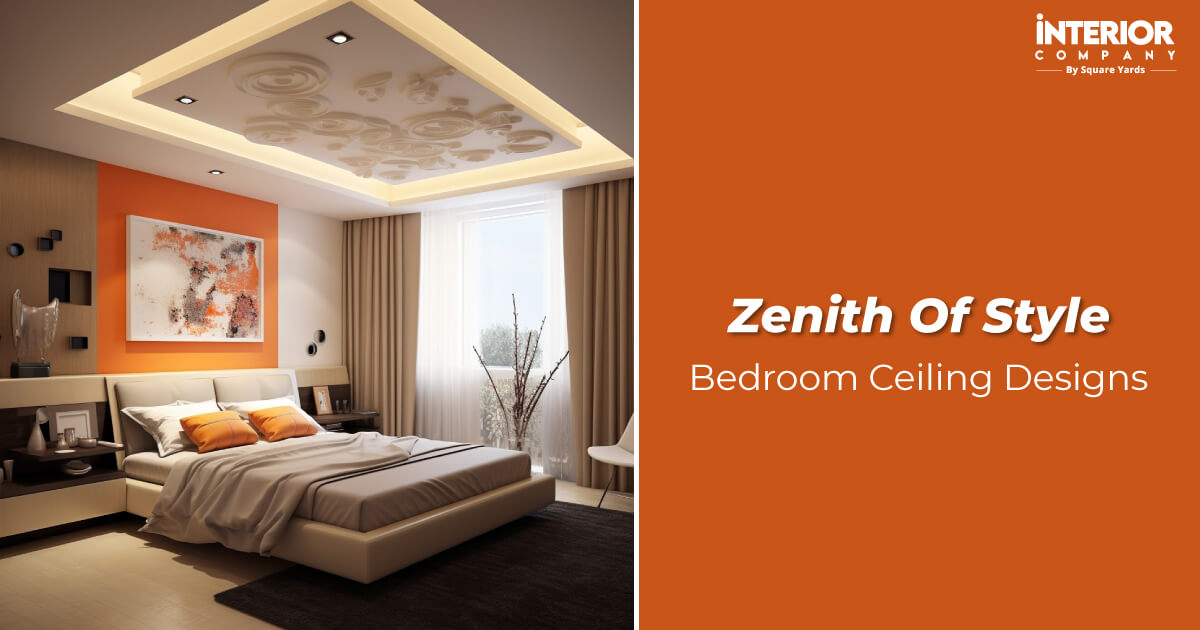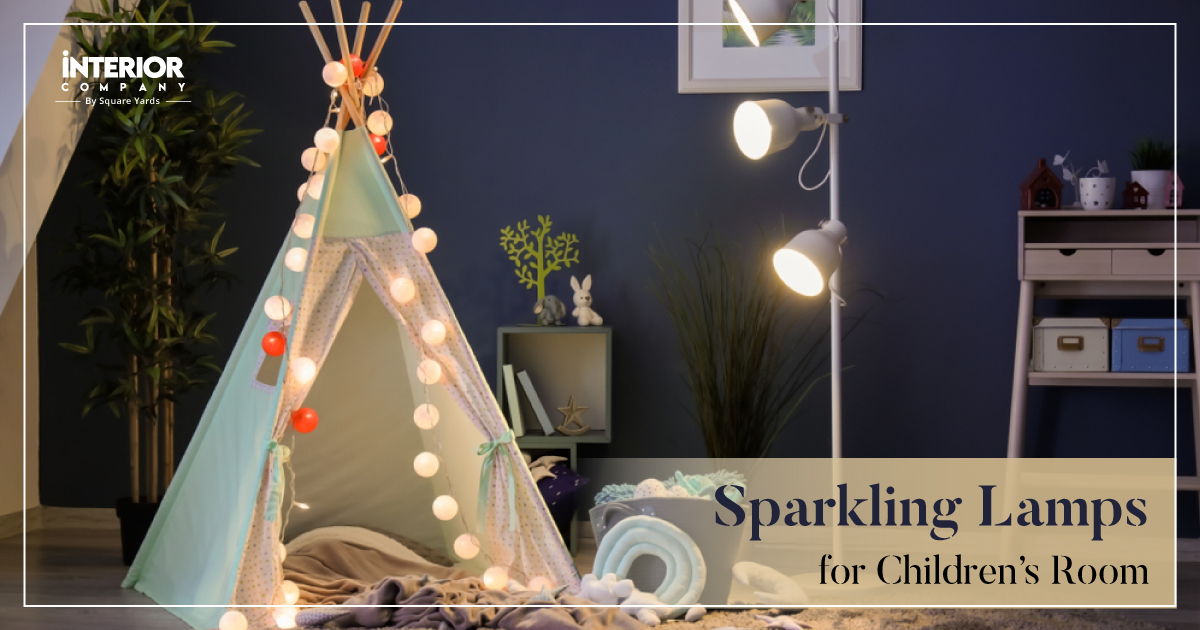- Home
- Trends
- Furniture And Decor
- Exterior Design
- Home Outside Colour Design Ideas
47 Stunning House Colour Combination for Outside Walls That Elevate Your Exterior Aesthetics
Choosing the right exterior colour for the home isn’t just about aesthetics—it’s about making a point. In the vibrant landscapes of India, where each home tells its own story, selecting the perfect colour combination can transform your house into a standout piece of art. Why do we always focus on the basics when there are many shades from which to choose that perfect house colour?
Table of Content
Why Is It Important To Focus On The Exterior?
Exterior House Colour Combination #1: White and Light Blue
Outside Home Colour Combination #2: Earthy Brown and Beige
Simple Outside Colour Combination for Indian House #3: Cream and Soft Green
Home Outside Colour Design #4: Yellow and Terracotta
Home Paint Colors Outside #5: Peach and Light Grey
Home Outside Colour Design #6: Royal Blue and White
Exterior Wall Paint Colour Combination #7: Vibrant Red and Gold
Home Outside Wall Colour Design #8: Light Pink and Lavender
Outside Home Colour Design #9: Saffron and Cream
Indian House Painting Outside Colours #10: Grey and Soft Yellow
House Colour Combination #11: Grey and White
Simple Outside House Colour Combination #12: Cream and Brown
Exterior Wall Paint Colour Combination #13: Grey and Yellow
House Outside Colour Combination #14: Grey and Purple
Simple Outside Colour Combination for Indian Houses #15: Brown and White
Exterior Home Paint Colour Combination #16: Cream and Brown House
Exterior Home Paint Colour Combination #17: Grey and Brown
Exterior Colour Combination #18: Grey and Blue
Colour Combination for House Exterior #20: Blue and White
Colour Combination for House Exterior #21: White and Ash
Outside House Painting Colour Combination #22: White and Cinnamon
Outside House Painting Colour Combination #23: Beige and Brown
Exterior Colour for Home #24: Slate Grey
Exterior Colour for Home #25: Sky Blue
Home Outside Colour Design #26: Royal Blue
Home Outside Colour Design #27: Whimsical Violet
Exterior Colour for Indian House #28: Sunshine Yellow
Exterior Colour for Indian House #29: Pretty Pink
Paint Design for Home Exterior #30: Dreamy Lavender
Paint Design for Home Exterior #31: Dusty Pink
Simple Home Front Colour #32: Valley Green
Simple Home Front Colour #33: Zesty Light Green
Vibrant Exterior Paint Design #34: Tangerine
Exterior Paint Design #35: Olive Green
Exterior House Paint Suggestion #36: Mint Green
Exterior House Paint Suggestion #37: Red
Exterior Paint Colour for Indian Home #38: Brown
Exterior Paint Colour for Indian Home #39: Modern Beige
Simple Exterior House Colour Shade #40: White
Simple Exterior House Colour Shade #41: Chocolate Brown
Exterior Paint Scheme #42: Gothic Black
Exterior Paint Scheme #43: Navy Blue
Exterior Wall Paint Design #44: Dark Teal
Exterior Wall Paint Design #45: Mustard Yellow
Outside Paint Colour for Home #46: Maroon
Outside Paint Colour for Home #47: Pale Yellow
Tips For Exterior Painting
Wrapping It Up
Why Is It Important To Focus On The Exterior?
While we often think about getting ready and dressing up when heading out, it's equally important to invest some time in sprucing up the interior and exterior of our homes. So, why do we hesitate to be bold? Painting your house can be one of the simplest and most cost-effective ways to make your residence conspicuous in this sea of bland beige and brown Indian house exterior colour. This blog will provide some tips to make your homes really pop!
Exterior House Colour Combination #1: White and Light Blue

White is considered a symbol of purity and positivity in Vastu, while light blue represents the sky and expansiveness. This combination of the best colour for home outside brings a sense of openness to your home’s exterior.
Outside Home Colour Combination #2: Earthy Brown and Beige
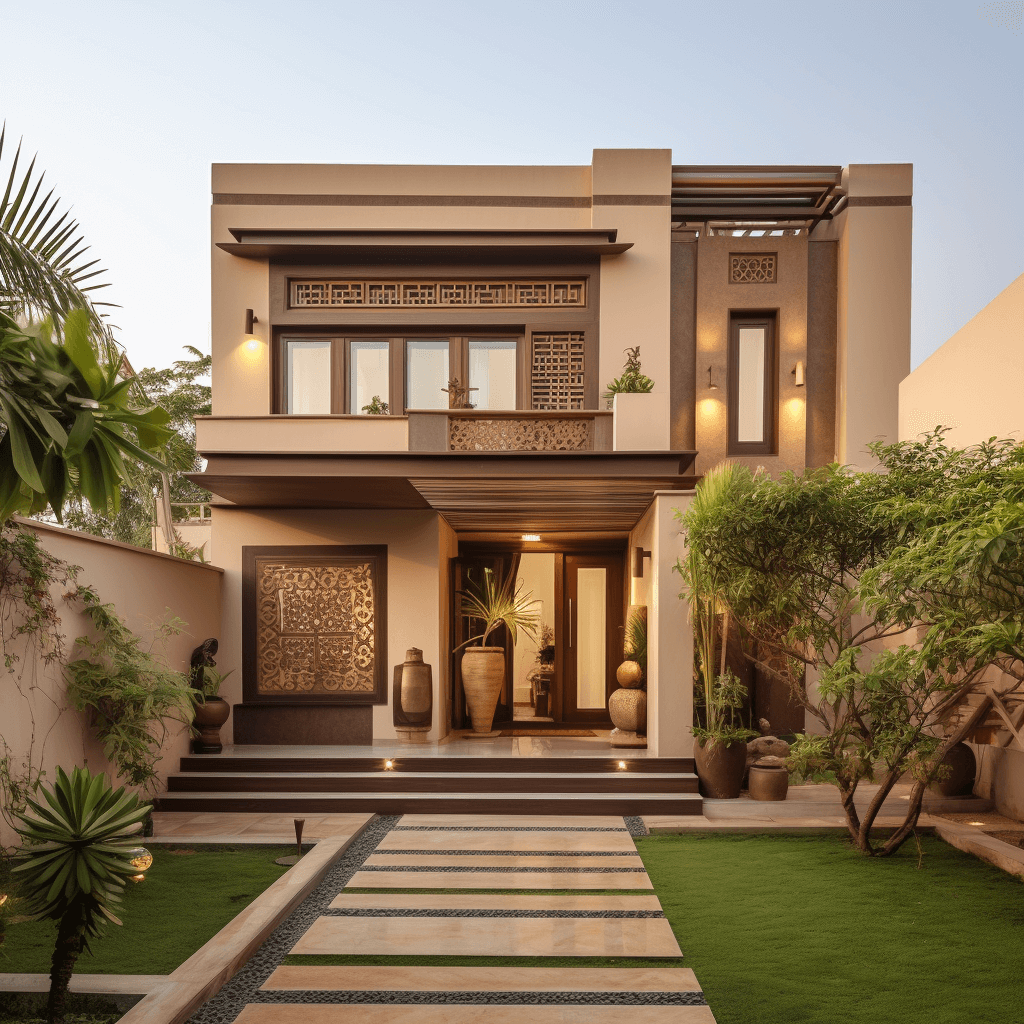
Earthy tones like brown and beige are in harmony with the elements of nature, according to Vastu principles. They promote stability, balance, and a sense of security in a space.
{walls}
Simple Outside Colour Combination for Indian House #3: Cream and Soft Green
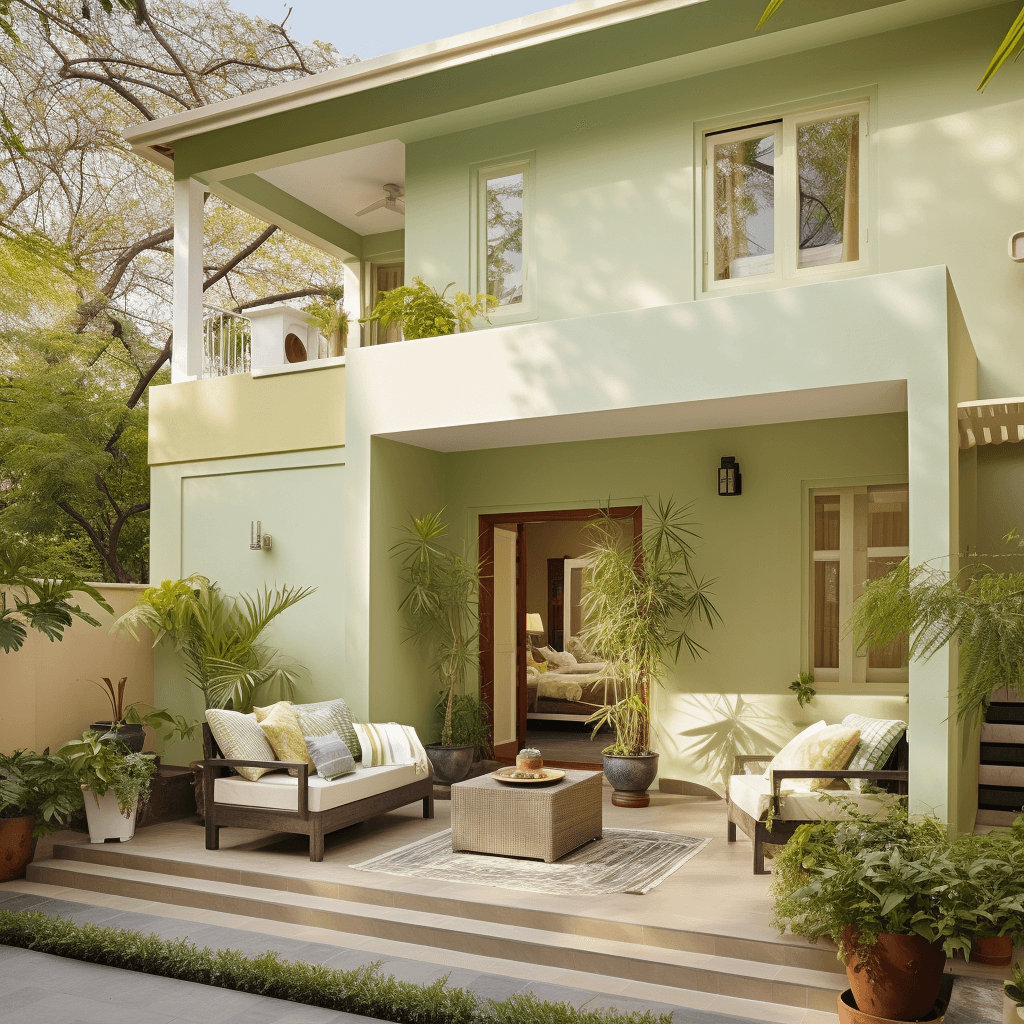
Such home colour ideas outside can create a balanced atmosphere. The cream is a neutral colour that signifies balance and harmony, and the soft green represents growth and vitality.
Recommended Articles
| Wall Exterior Designs | 28 Beautiful Home Wall Exterior Design Ideas That Leave the Lasting Impression |
| Front Wall Designs | 9 Stylish and Trendy Front Wall Design Ideas You Must Explore in 2025 |
| Home Exterior Designs | 50 Beautiful Home Exterior Design Ideas You’ll Love to Explore |
| Exterior Wall Tile Designs | 10 Modern Exterior Wall Tile Designs That Elevate the Overall Look of Your Space |
| Parapet Wall Designs | 16 Stylish and Modern Parapet Wall Designs for Your Roof and Terrace Space |
Home Outside Colour Design #4: Yellow and Terracotta

Yellow, the colour of optimism and energy, combined with terracotta can bring a lively and cheerful vibe to your home. This combination is believed to represent positivity, intellect, and prosperity, stability and grounding energy. This combination of home colour paint design outside will be a great choice for your home.
Home Paint Colors Outside #5: Peach and Light Grey

Peach is associated with joy, and light grey provides stability. This pairing brings equilibrium to your home’s exterior. This combination of home painting ideas outside creates a balanced and soothing ambiance, promoting overall well-being and productivity
{walls}
Home Outside Colour Design #6: Royal Blue and White
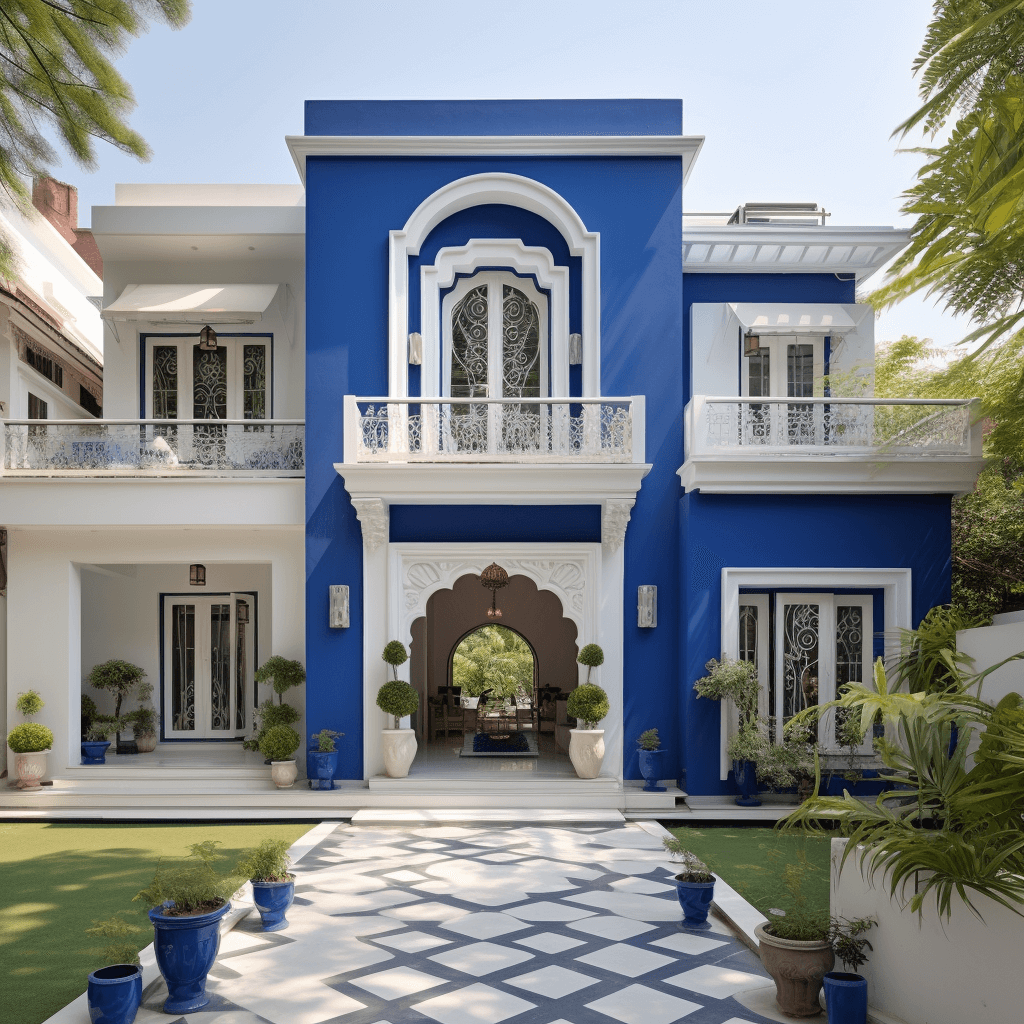
Royal blue represents depth and wisdom, and white signifies purity and clarity. One of the most creative painting ideas for home outside consists of drawing waves at the sides of your home, which is a combination of blue and white.
Exterior Wall Paint Colour Combination #7: Vibrant Red and Gold

Red is often associated with prosperity and good luck in Vastu. When paired with gold, it creates a sense of luxury and richness. This combination is a common Indian home colour outside which is believed to bring abundance and success.
Recommended Articles
| Boundary Wall Designs | Modern Boundary Wall Design Ideas That Elevate Your Exterior Space |
| Ground Floor House Designs | 8 Impressive Ground Floor House Designs That Tranform Your Exterior in Style |
| Duplex Designs | 13 Unique and Stylish Duplex Designs You Should Inspire From |
| Small House Designs | 20 Best Low-Cost Small House Design Ideas That Maximize Your Space |
| Farmhouse Designs | 8 Inspiring Farmhouse Design Ideas That are Worth for Your Space |
Home Outside Wall Colour Design #8: Light Pink and Lavender

Light pink symbolises love and tenderness, while lavender promotes relaxation. This combination can give your home a gentle and soothing presence. If this home colour selection outside is ideal, as per Vastu. But if it is too bright for you, then try this combo in a matte finish.
Outside Home Colour Design #9: Saffron and Cream
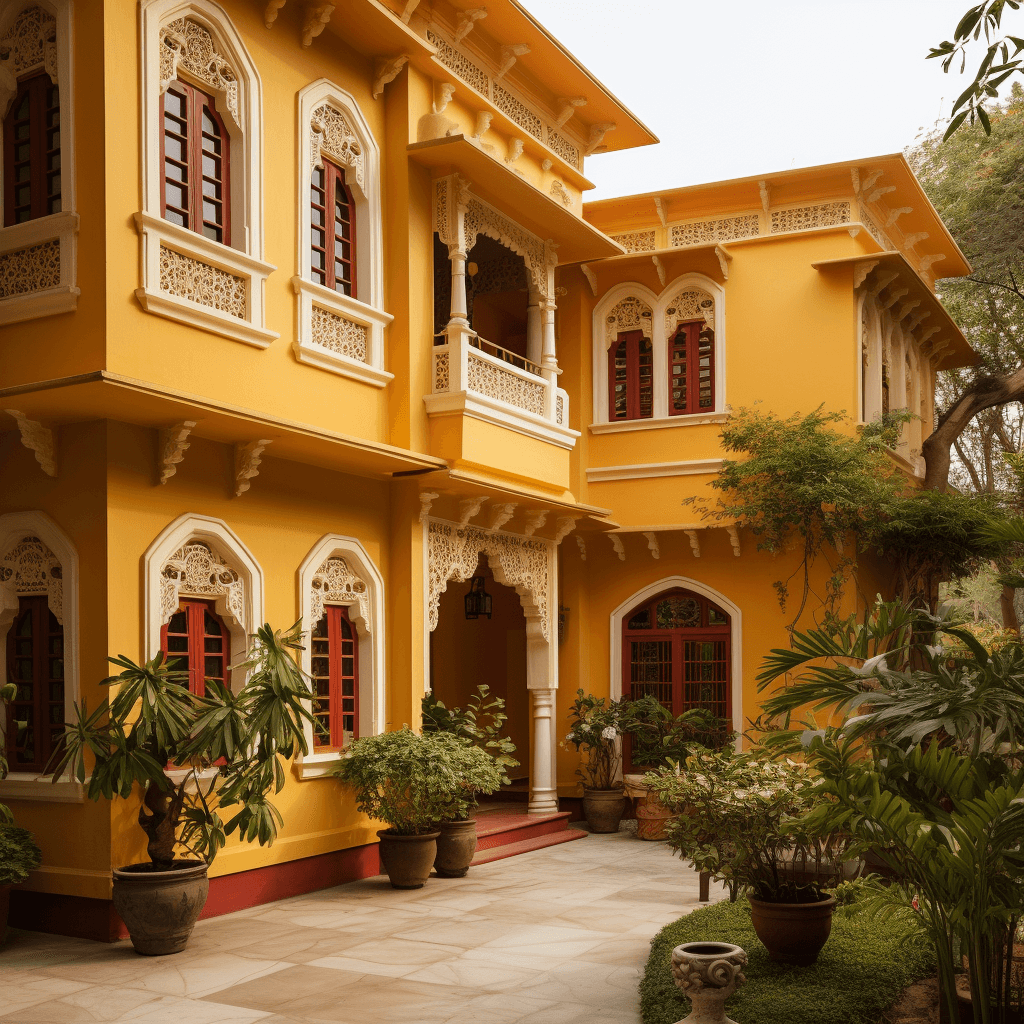
Saffron is a sacred colour in Vastu, representing spirituality and purity. Combining it with cream creates a spiritually charged and harmonious atmosphere around your home.
Indian House Painting Outside Colours #10: Grey and Soft Yellow
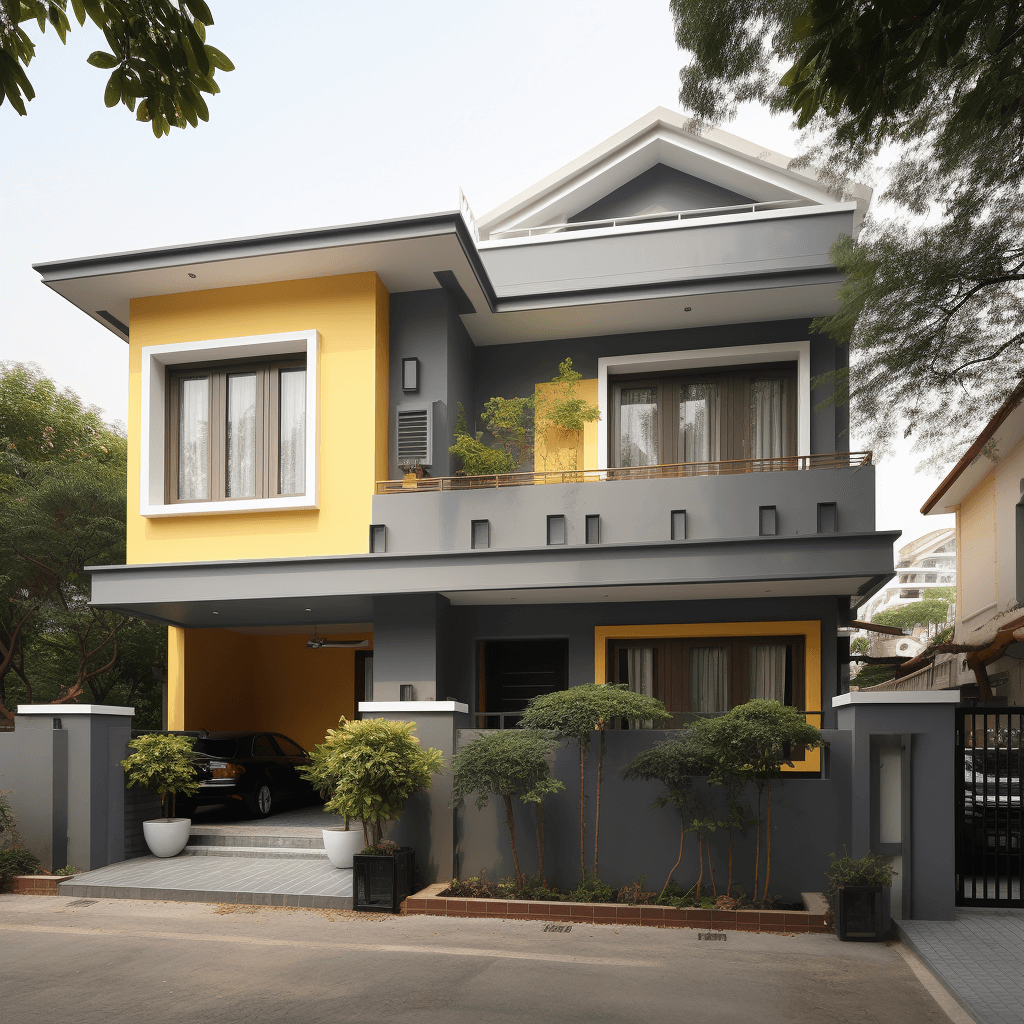
Grey is a neutral colour that conveys balance, and soft yellow is associated with hope and happiness. This home outside wall colour combination can create a balanced and cheerful ambience while adhering to Vastu principles.
{walls}
House Colour Combination #11: Grey and White
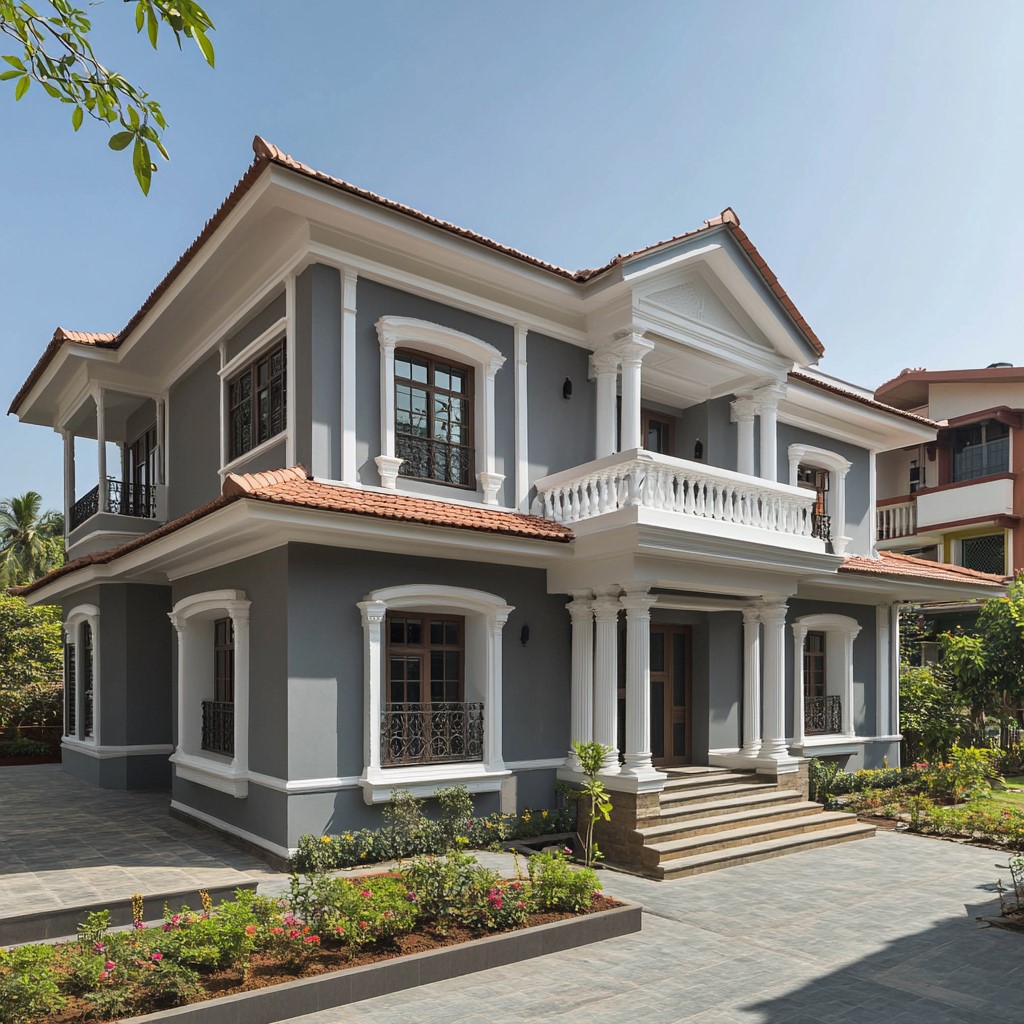
The classic duo of grey and white is timeless. Grey provides a strong base, while white trims bring brightness, enhancing the house’s architectural details. This exterior colour for the home is perfect for achieving a balanced, sophisticated exterior.
Simple Outside House Colour Combination #12: Cream and Brown

Cream and brown come together to create a soft, warm look that feels inviting. This exterior colour scheme is a fantastic choice for those who want to strike a balance between understated elegance and stylish design without going overboard.
Exterior Wall Paint Colour Combination #13: Grey and Yellow
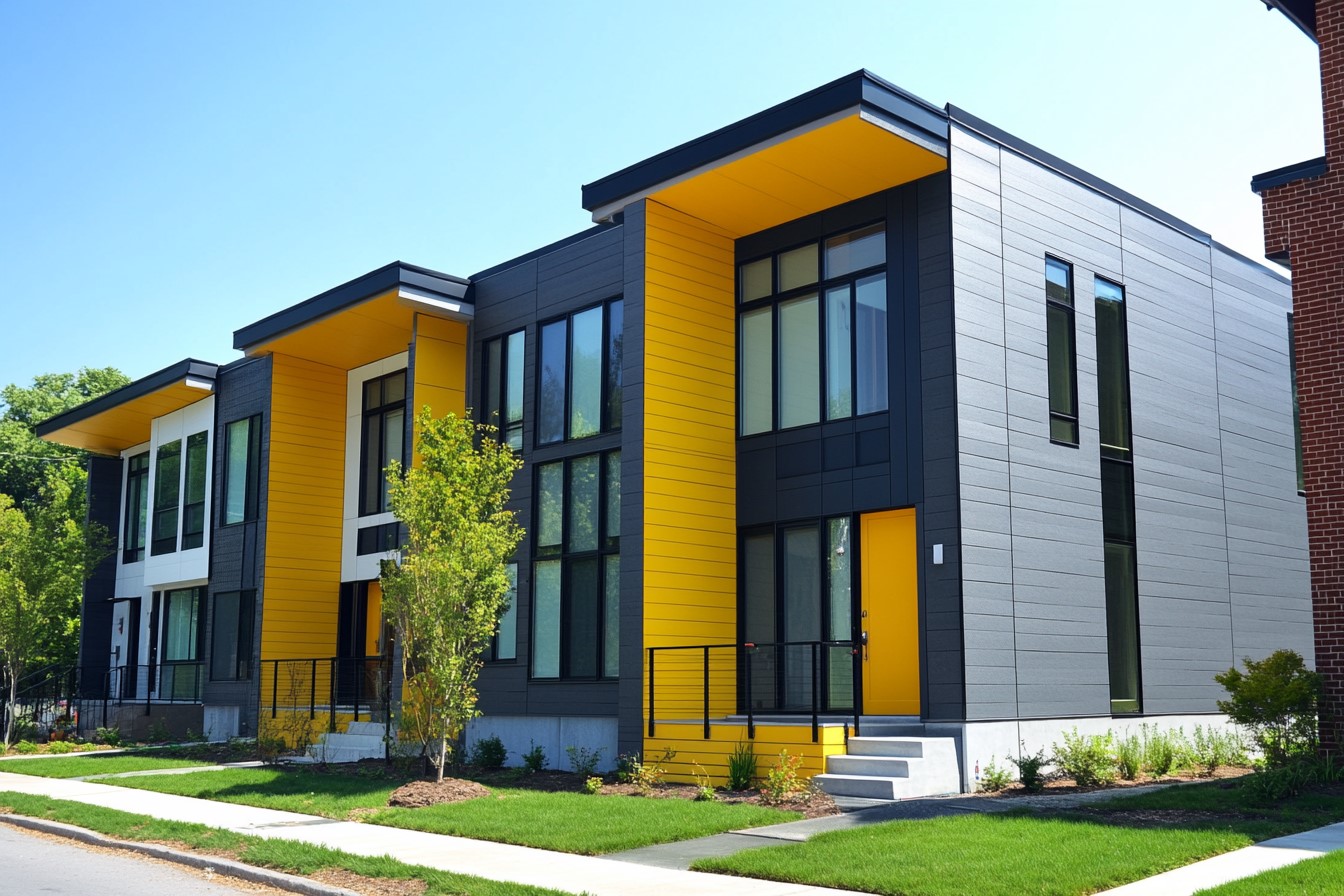
This cheerful combination of grey and yellow brings a sunny disposition to any exterior. Yellow accents pop against a grey backdrop, perfect for creating a welcoming and happy home environment.
{walls}
House Outside Colour Combination #14: Grey and Purple
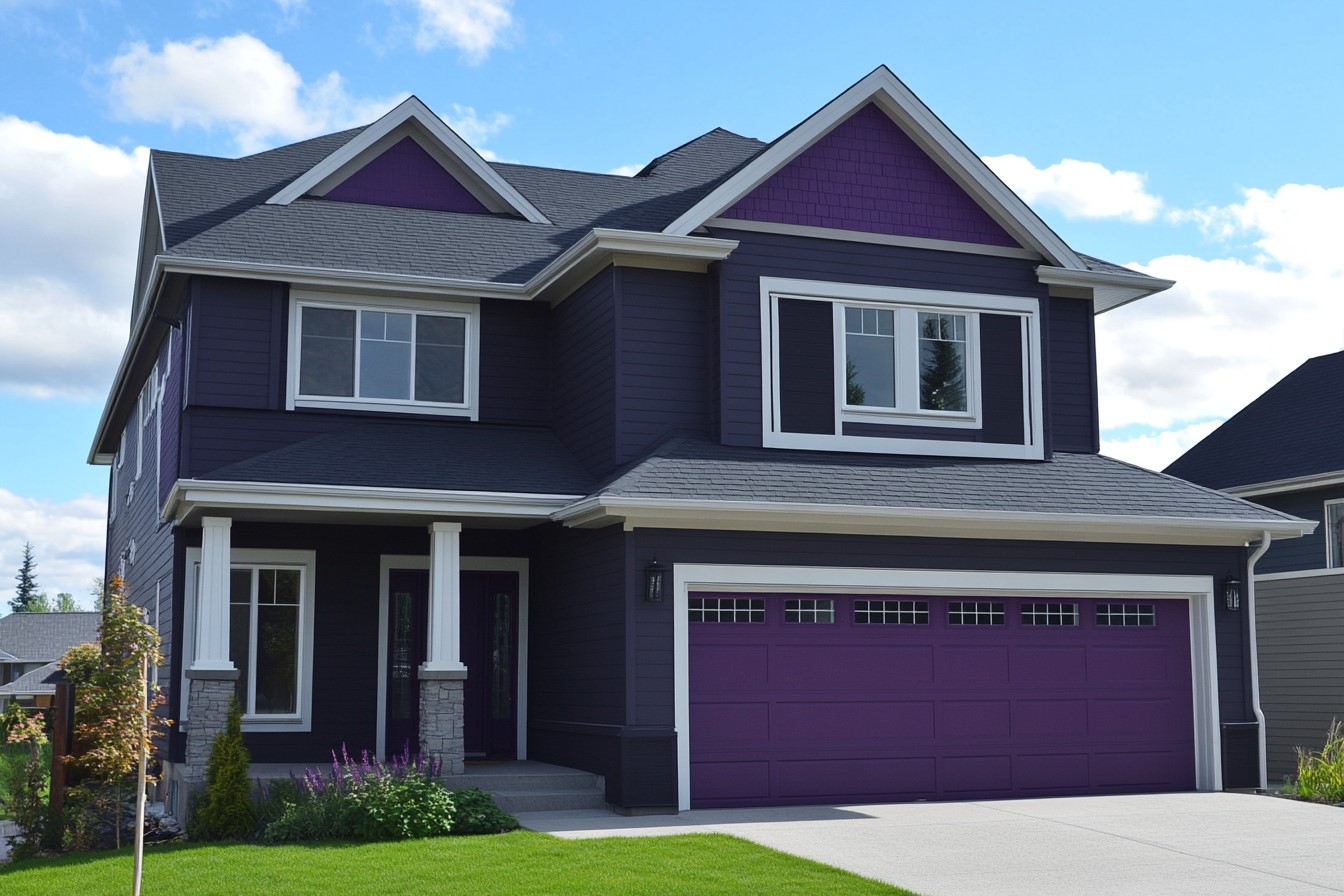
This subtle yet striking combination of grey with hints of purple adds an artistic flair to the exteriors. It's perfect for those who want a unique look without going too bold, blending well with modern and traditional designs alike.
Simple Outside Colour Combination for Indian Houses #15: Brown and White
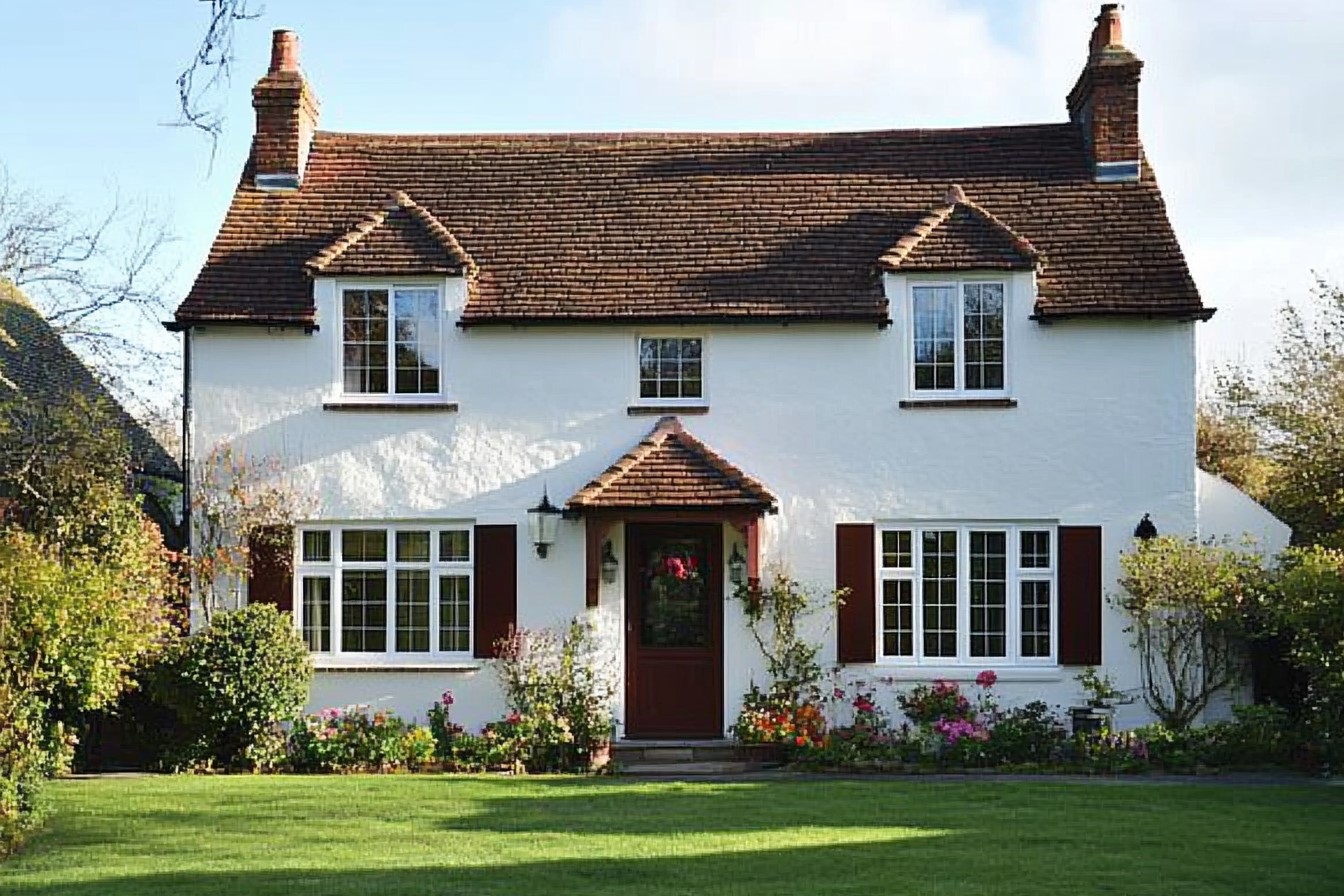
This combination offers a clean and balanced look. White brightens the earthy brown, making the exterior more spacious and inviting.
Also Read: 19 Simple Yet Elegant House Design Ideas in 2025
Exterior Home Paint Colour Combination #16: Cream and Brown House

Cream and brown are a natural pair, providing a soft, welcoming look that blends perfectly with the environment. This combination is ideal for those who prefer a subtle yet inviting exterior.
Also Read: 11 Beautiful Single Floor House Design Ideas That Blend Style and Comfort
{walls}
Exterior Home Paint Colour Combination #17: Grey and Brown

Grey and brown together create a mature and balanced look. This house colour combination is perfect for achieving a refined exterior. The neutral nature of these colours allows for versatility in design, making them suitable for various architectural styles and settings. Whether used in home exteriors, landscaping, or decor, the synergy between grey and brown adds depth and character while maintaining a sense of understated refinement.
Also Read: Modern Two-storey House Design That Fulfil All Your Need
Exterior Colour Combination #18: Grey and Blue

Grey and blue is an understated exterior wall paint colour combination that works well for creating an appearance like no other for home exteriors. It can enhance the overall look when paired with white or silver accents, resulting in a fresh and contemporary finish.
Exterior Colour Combination #19: Pink and Grey

Pink and grey create a beautifully modern take on traditional charm. This gentle yet stylish house colour combination brings a sense of warmth and comfort, making it a perfect choice that feels both inviting and on-trend.
{walls}
Colour Combination for House Exterior #20: Blue and White
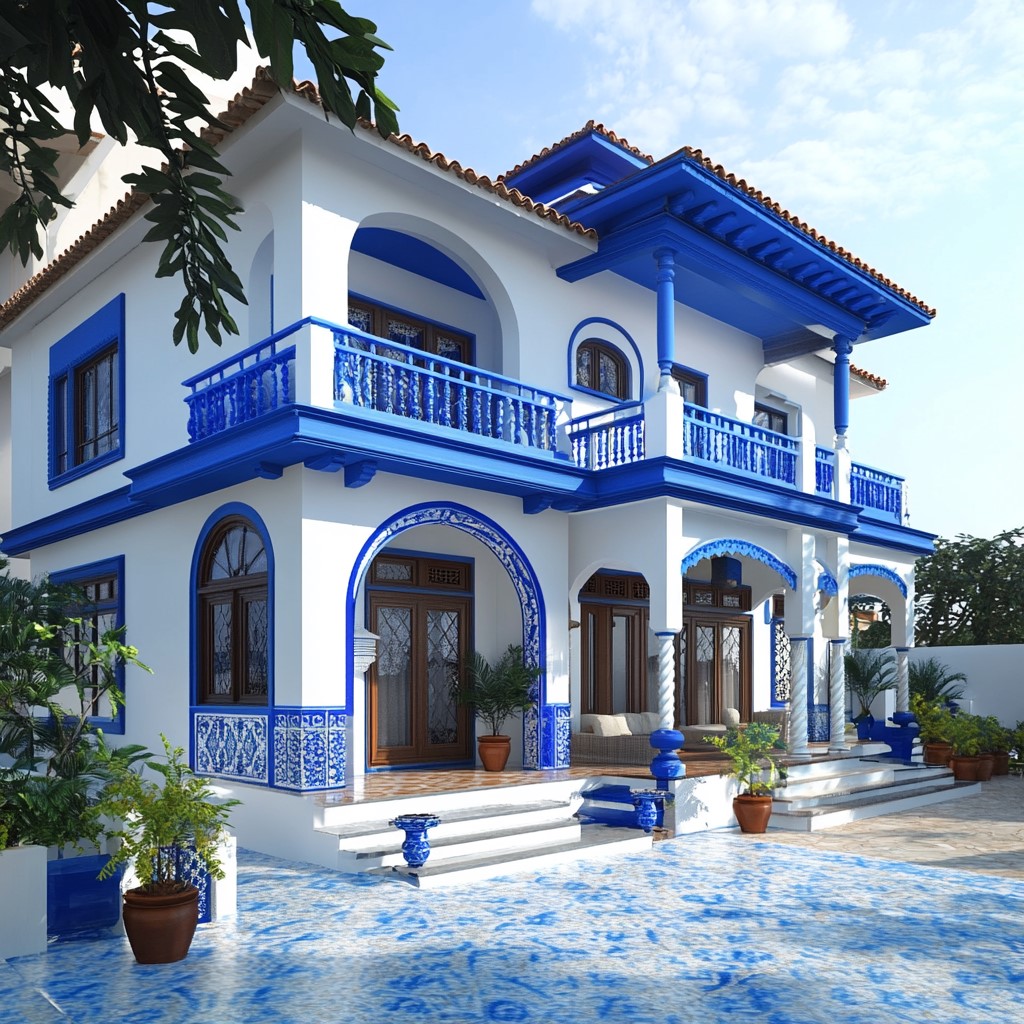
The blue and white combination is reminiscent of the sky and clouds, providing a serene and classic look that never goes out of style.
Colour Combination for House Exterior #21: White and Ash
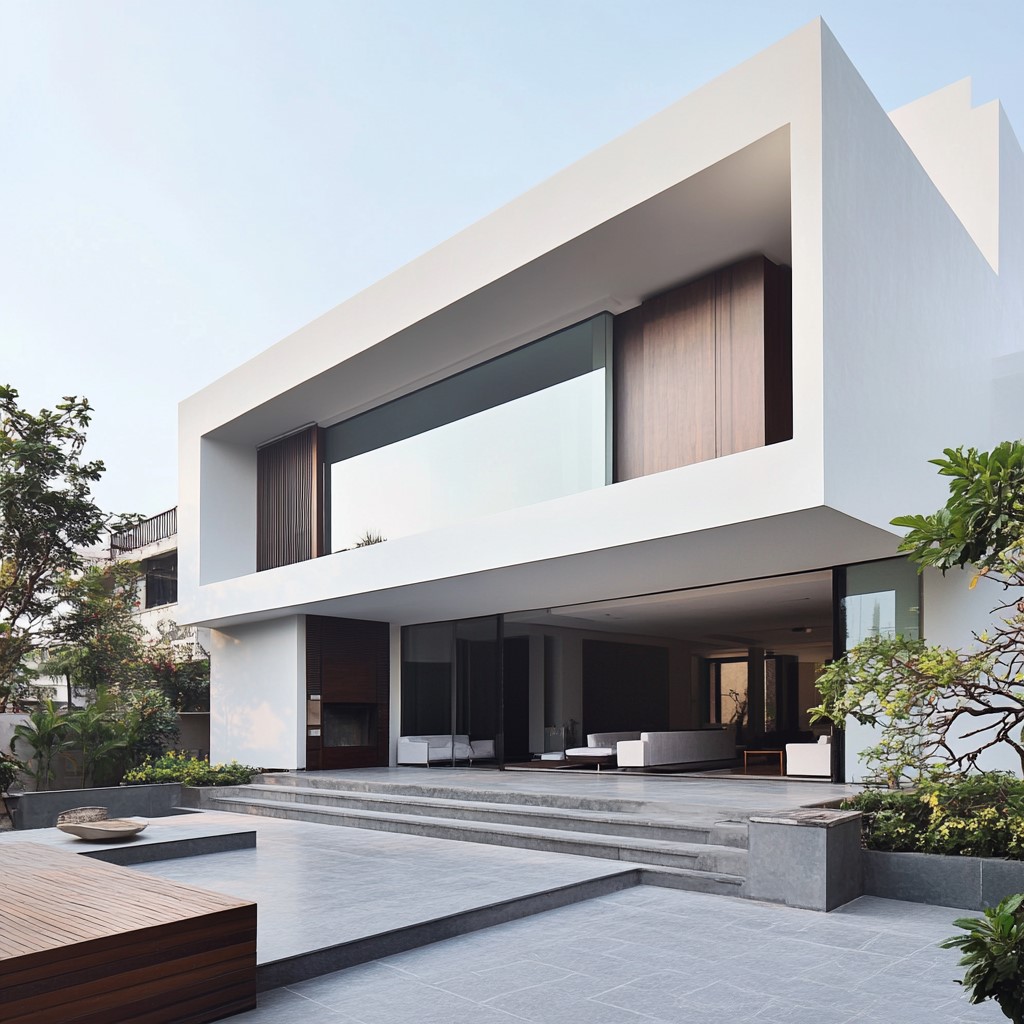
The combination of white and ash grey results in a sleek and modern aesthetic. This house colour palette is particularly suitable for individuals looking to achieve a minimalist style that still feels welcoming for exterior space.
Outside House Painting Colour Combination #22: White and Cinnamon
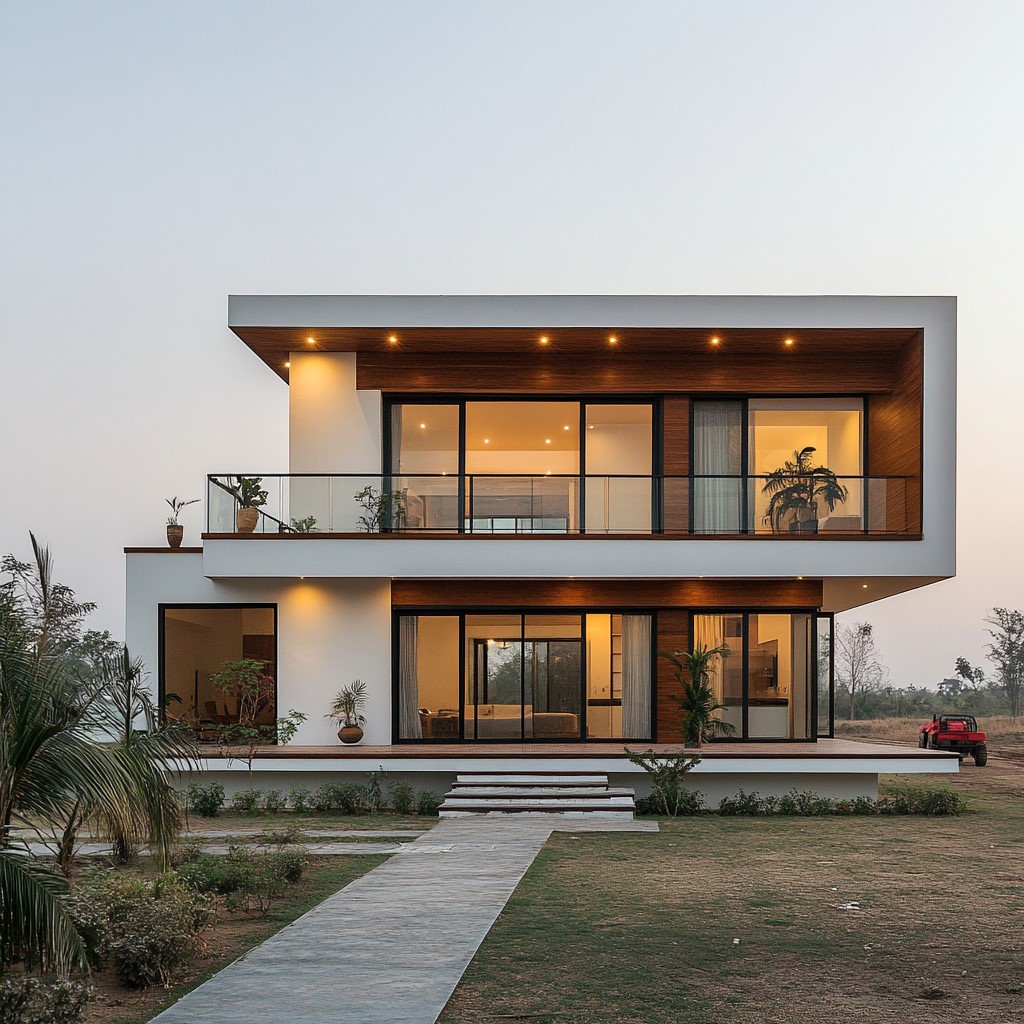
White with cinnamon accents offers a rustic yet refined exterior look. It's perfect for homes that want to balance modern cleanliness and traditional warmth.
Also Read: 8 Luxurious Home Exterior Design Ideas for Outdoor Parties
{walls}
Outside House Painting Colour Combination #23: Beige and Brown
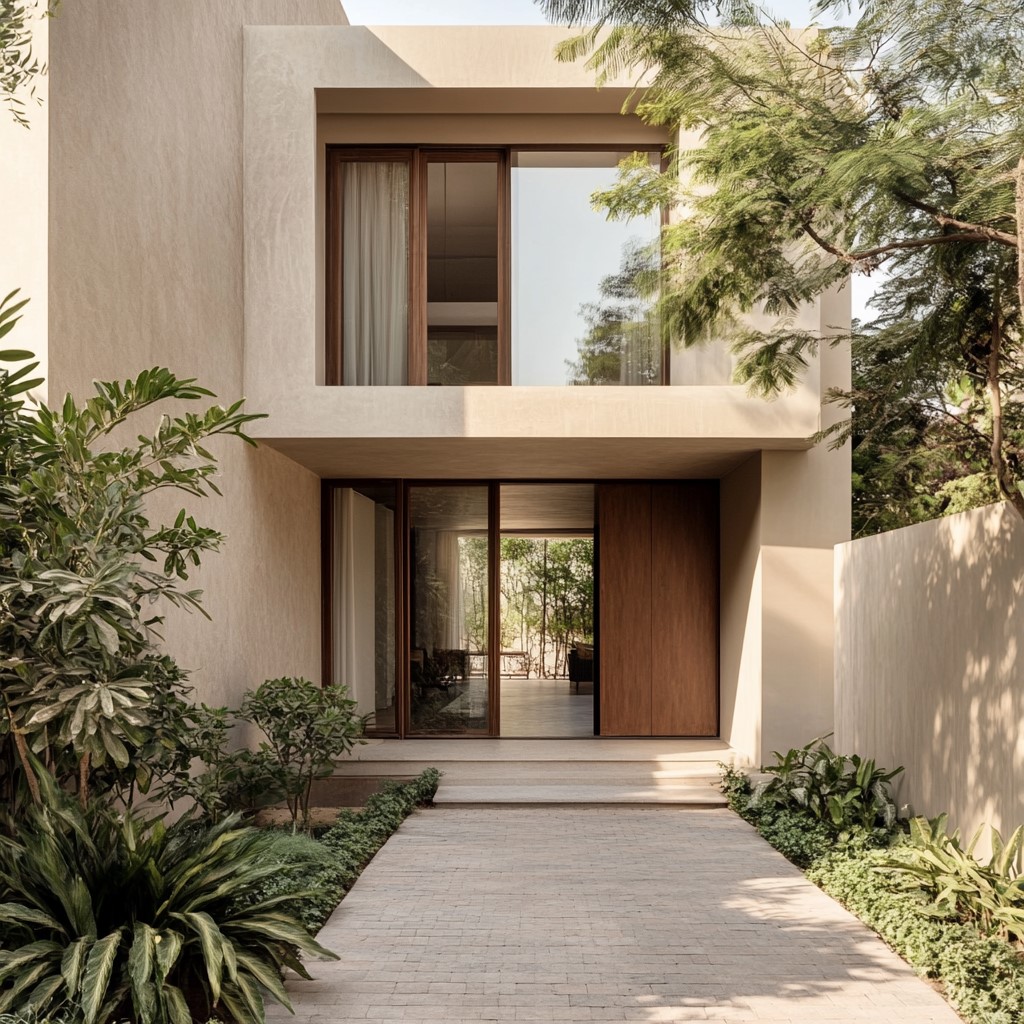
Beige and brown together create a cosy and unassuming exterior. This colour combination is perfect for those seeking a subtle, natural look that blends seamlessly with their surroundings.
Also Read: 11 Modern Grey House Exterior Colour Schemes for Your Space
Exterior Colour for Home #24: Slate Grey
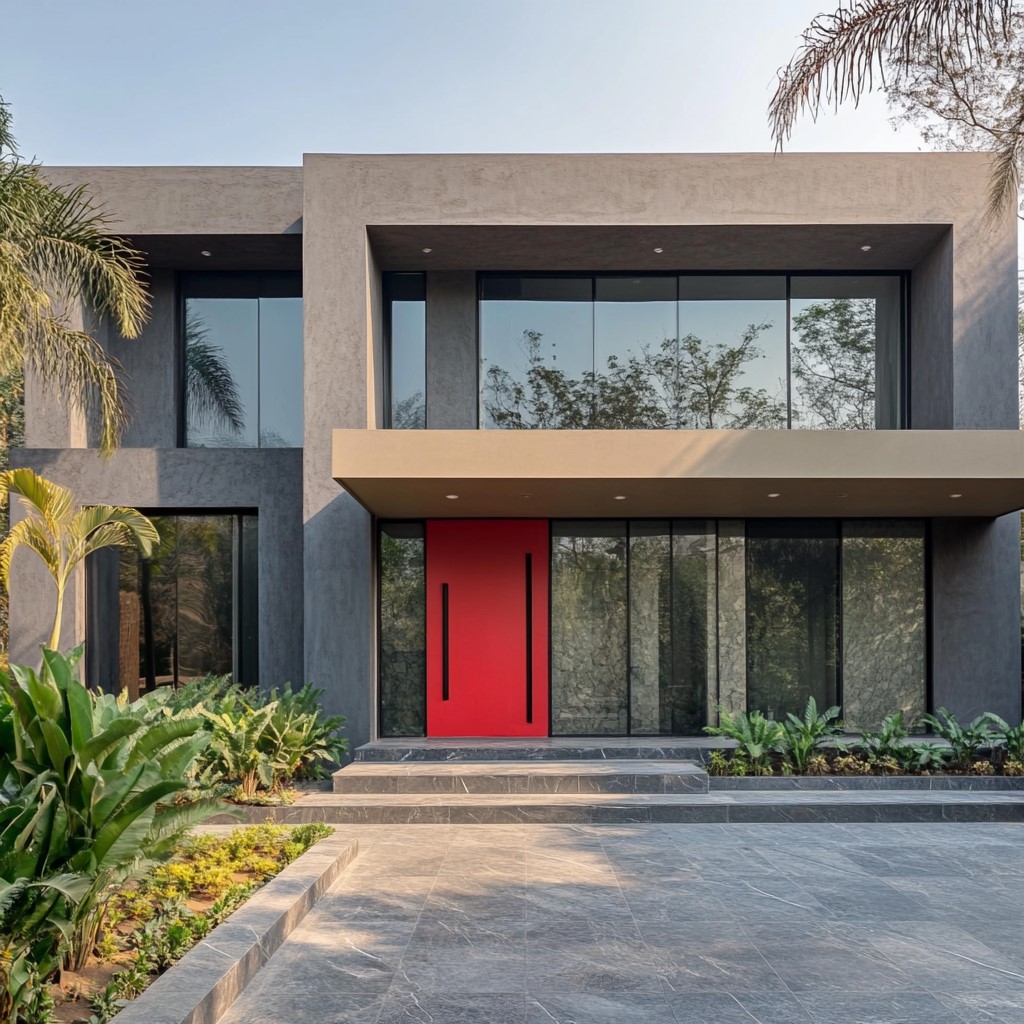
Grey is a stylish exterior colour for a home that enhances the look of any home. It suits people who like a simple design but still want some elegance. You can pair it with bright door colours like blue or red for a nice contrast.
Exterior Colour for Home #25: Sky Blue
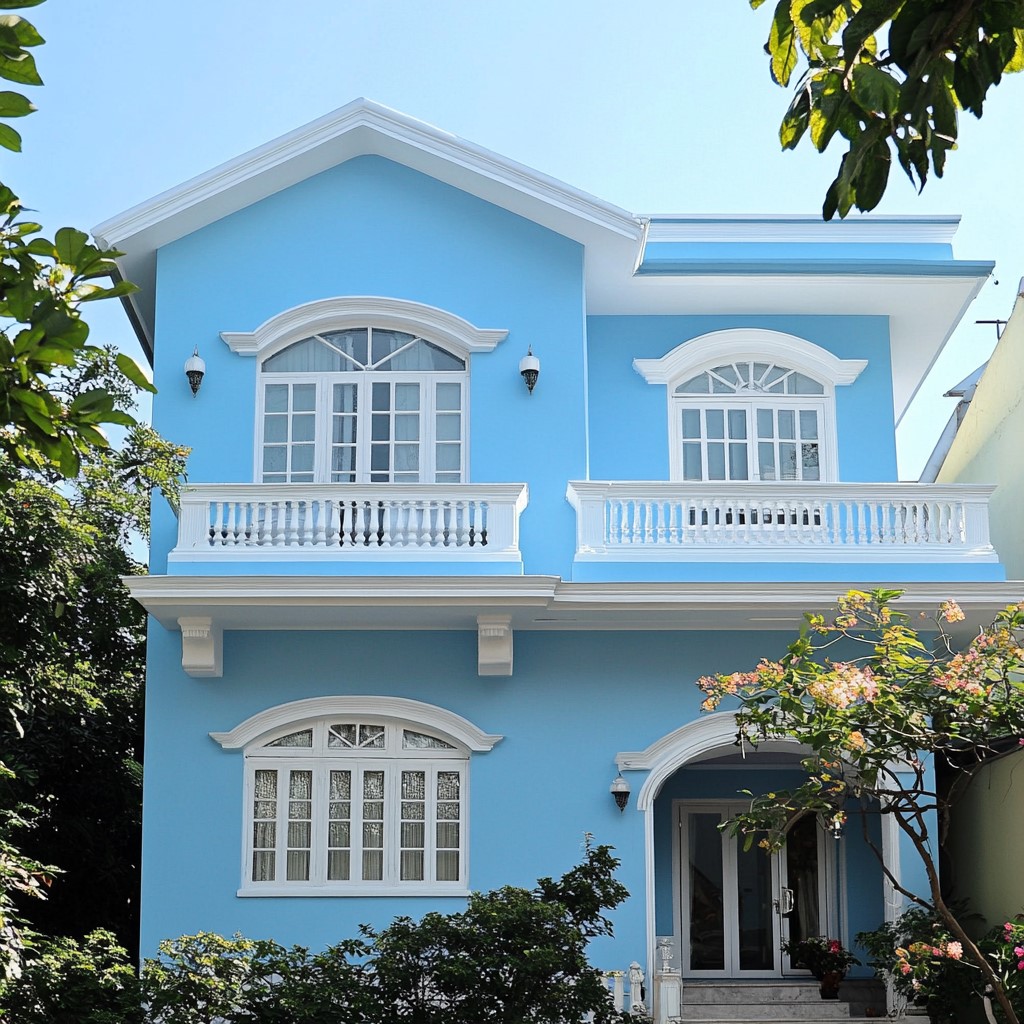
Sky blue is wonderfully light and breezy, ideal for homes in warmer climates. It pairs beautifully with white trims, giving a fresh look that echoes the clear sky. This colour encourages a calm and welcoming atmosphere.
{walls}
Home Outside Colour Design #26: Royal Blue

Deep blue makes a bold statement, bringing depth and drama to your home's exterior. It's a royal hue that works well with lighter shades of blue or crisp white accents, perfect for creating a striking yet elegant appearance.
Home Outside Colour Design #27: Whimsical Violet
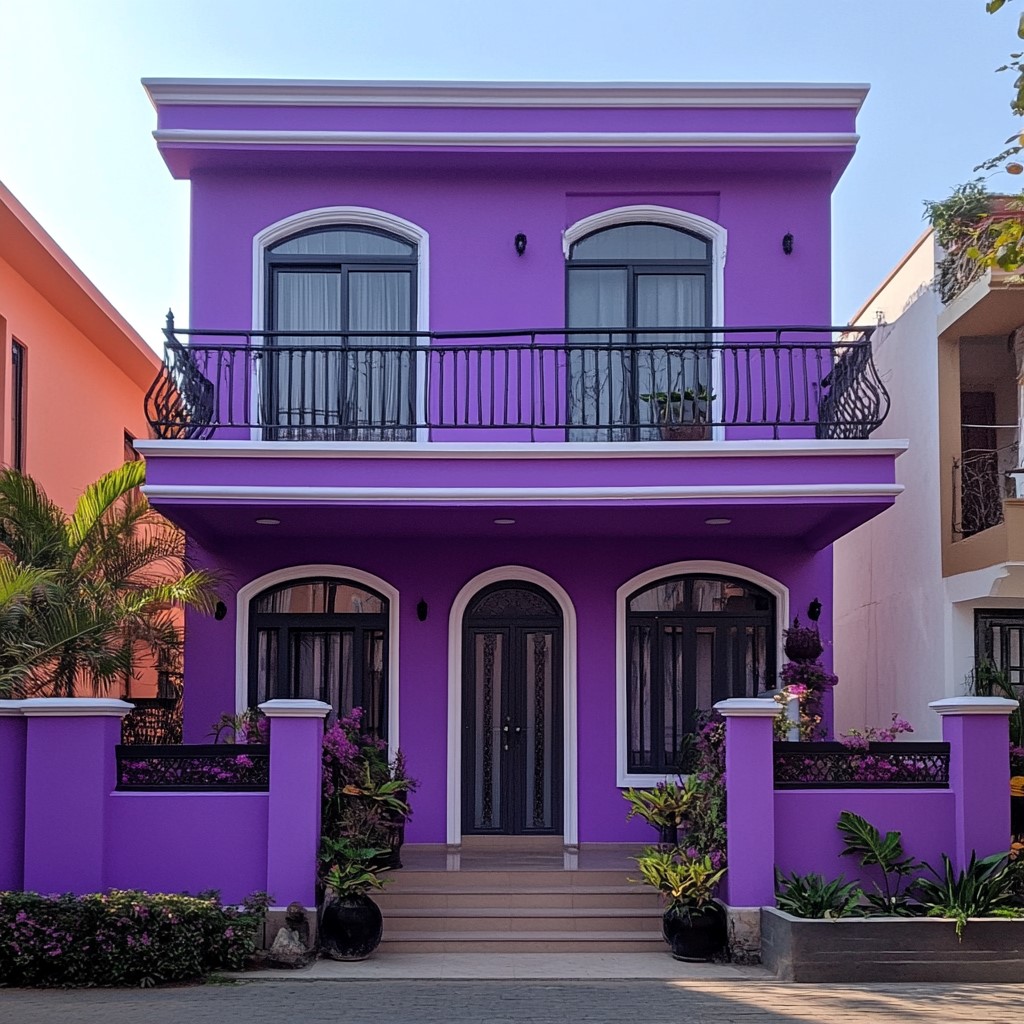
Violet purple is vibrant, offering a unique charm in any neighbourhood. It's great for those who want to express their creativity. It can be softened with shades of lilac or bold with white trims.
Exterior Colour for Indian House #28: Sunshine Yellow
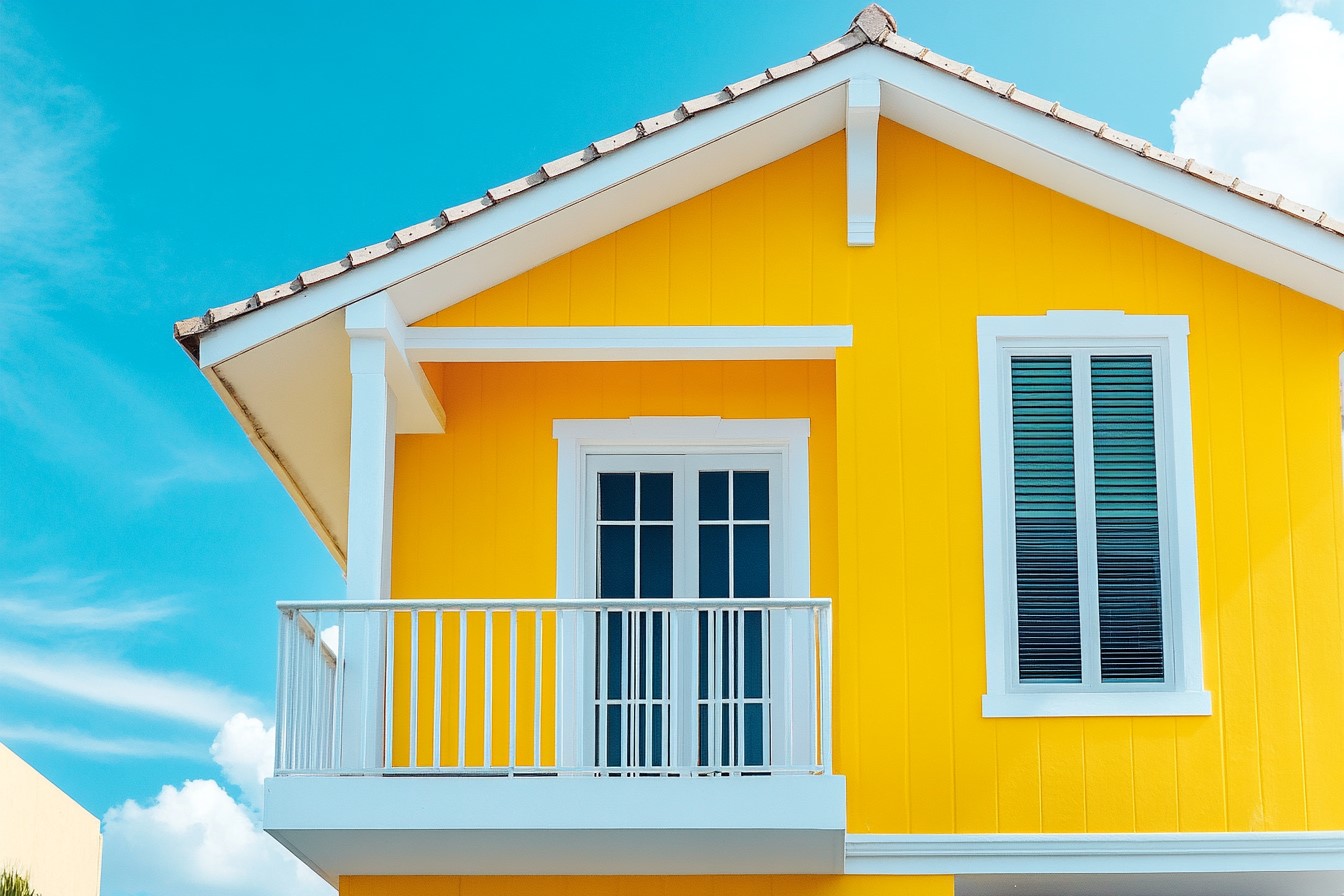
A yellow facade radiates warmth and joy, perfect for creating a cheerful home environment. It pairs splendidly with white or grey accents to balance its vibrancy, making it an excellent choice for families looking for a sunny exterior.
Also Read: 11 Latest Wooden House Design Ideas in 2025
{walls}
Exterior Colour for Indian House #29: Pretty Pink
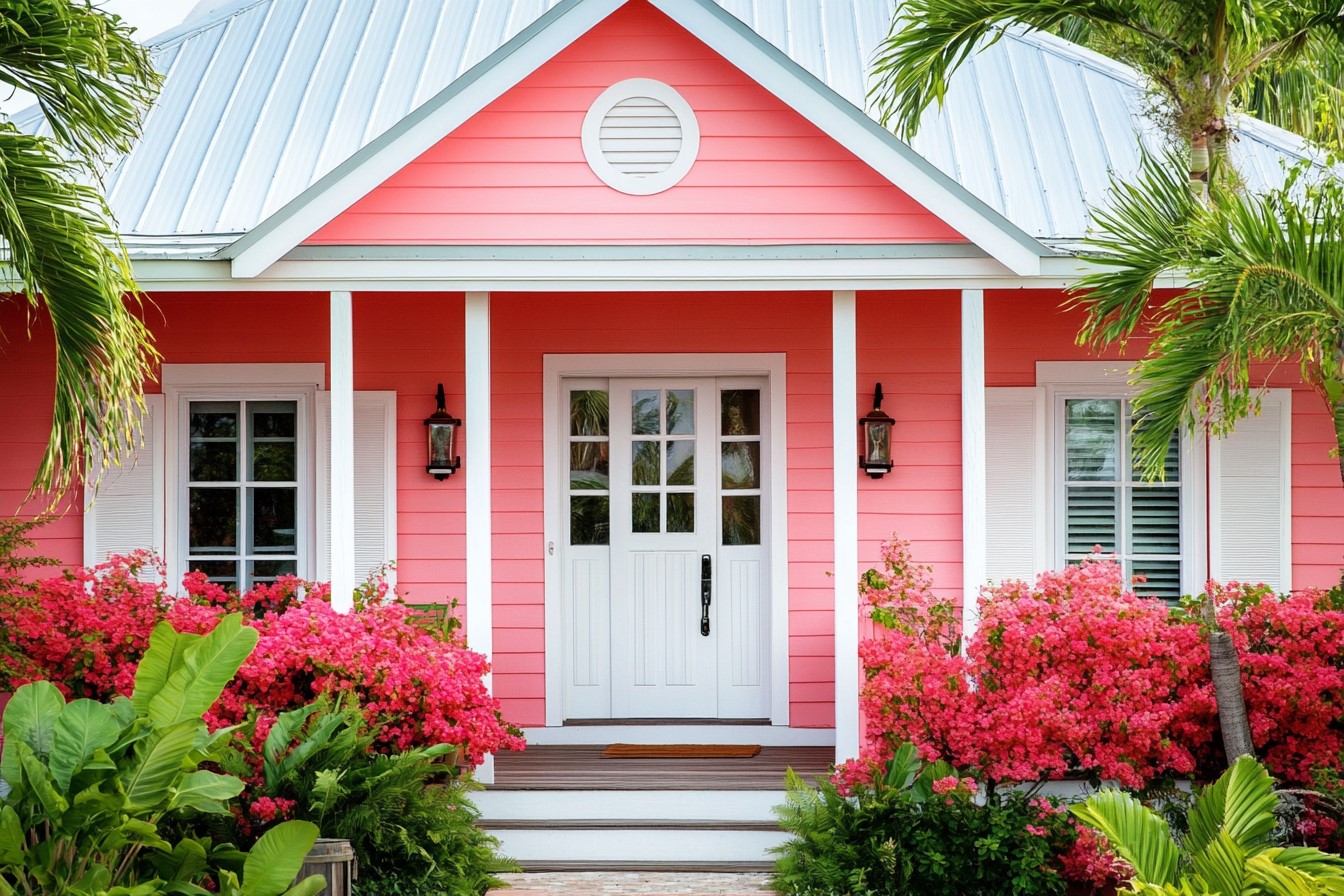
Pink offers a playful yet delicate touch to your home's exterior, perfect for adding a whimsy. Lighter shades can be calm and inviting, while bolder pinks make your home stand out. Pair it with darker shutters or trim to ground the look.
Paint Design for Home Exterior #30: Dreamy Lavender
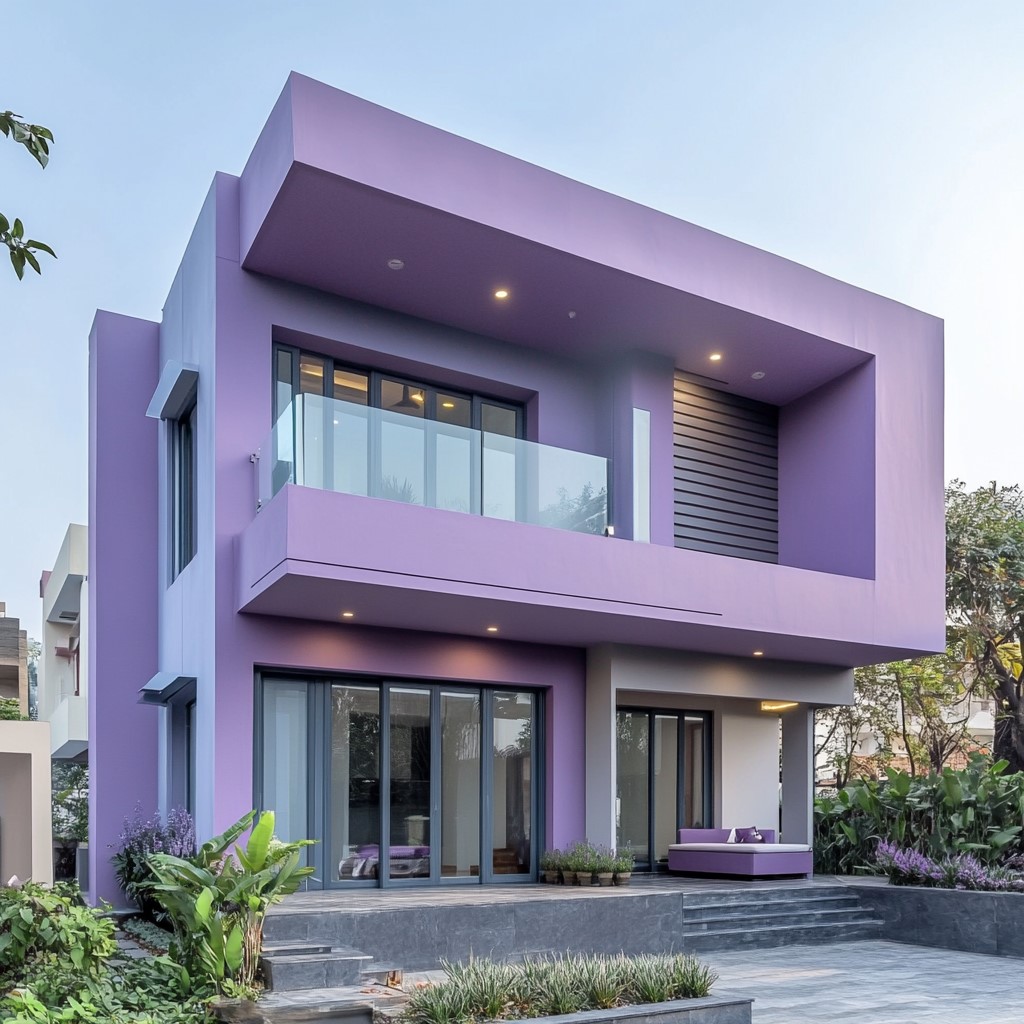
Embracing lavender can give your home a regal presence. This colour works well with white or grey accents to highlight its depth. Purple is ideal for combining traditional elegance with a contemporary edge.
Paint Design for Home Exterior #31: Dusty Pink
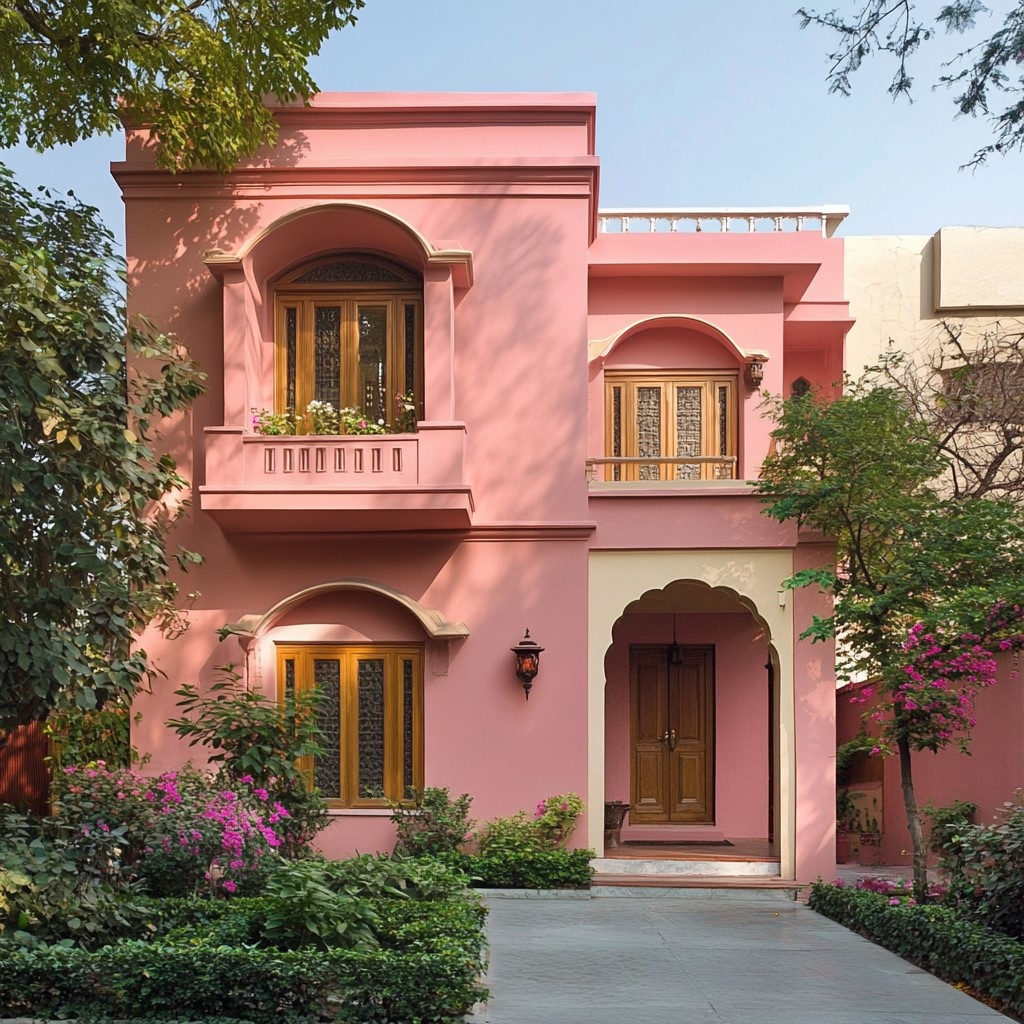
Dusty pink is passionate and full of life, a choice that can make any home pop with colour. It works well with cream or light grey trims, offering a fresh and youthful exterior colour for the home that remains sophisticated.
{walls}
Simple Home Front Colour #32: Valley Green

A vibrant green exterior conveys richness and connection with nature, making it perfect for homes surrounded by gardens or greenery. It's versatile, pairing nicely with earth tones or brighter whites for a clean finish.
Simple Home Front Colour #33: Zesty Light Green

Light green is soft and subtle, providing a backdrop that blends well with natural settings. It's a peaceful colour pairs beautifully with white or beige trims, ideal for achieving a calm and harmonious exterior.
Vibrant Exterior Paint Design #34: Tangerine

Tangerine is a bold and vibrant choice that infuses your home with warmth and energy. It’s particularly striking when paired with cream or dark brown trims, offering a modern look with a playful twist.
{walls}
Exterior Paint Design #35: Olive Green
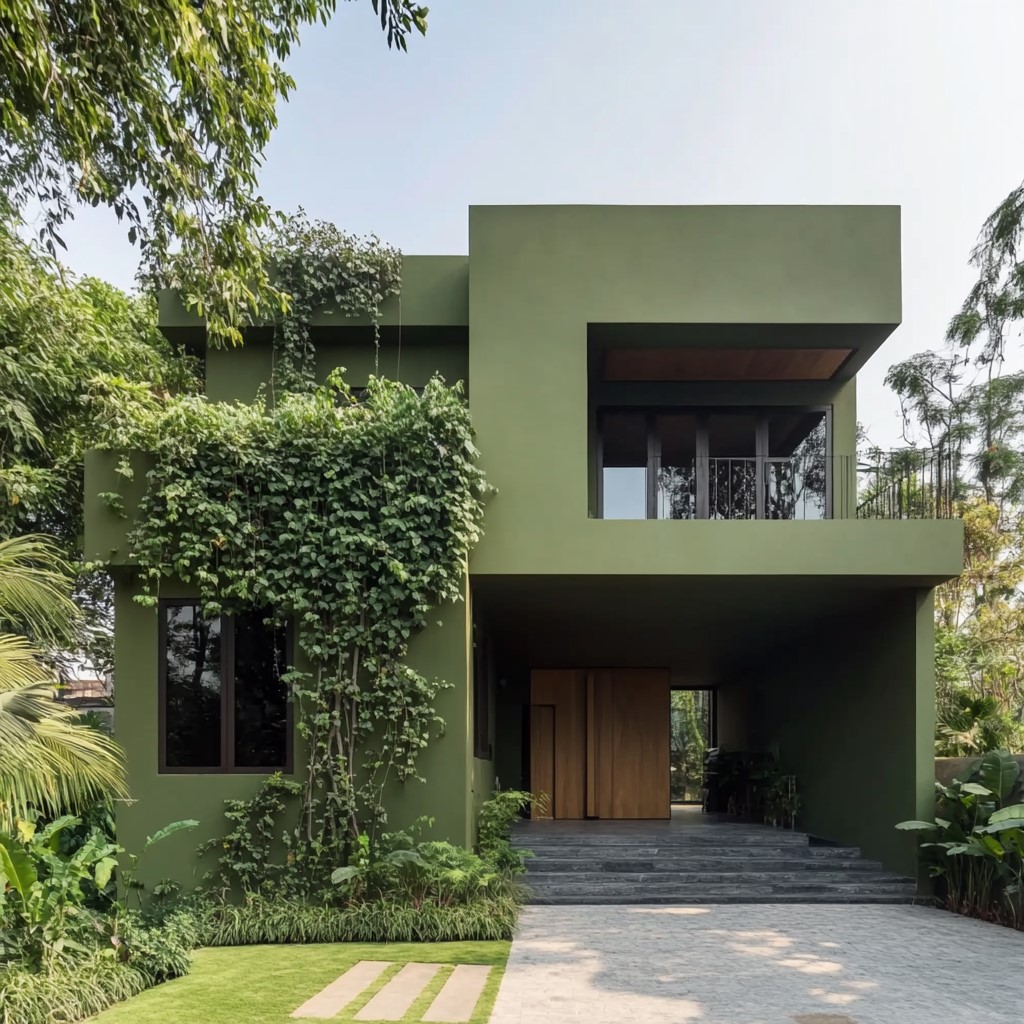
Olive Green is deep and soothing, reminiscent of lush landscapes. This colour suits homes that aim to blend into natural surroundings while maintaining a distinctive presence. Pair it with earth tones for a grounded, organic look.
Exterior House Paint Suggestion #36: Mint Green
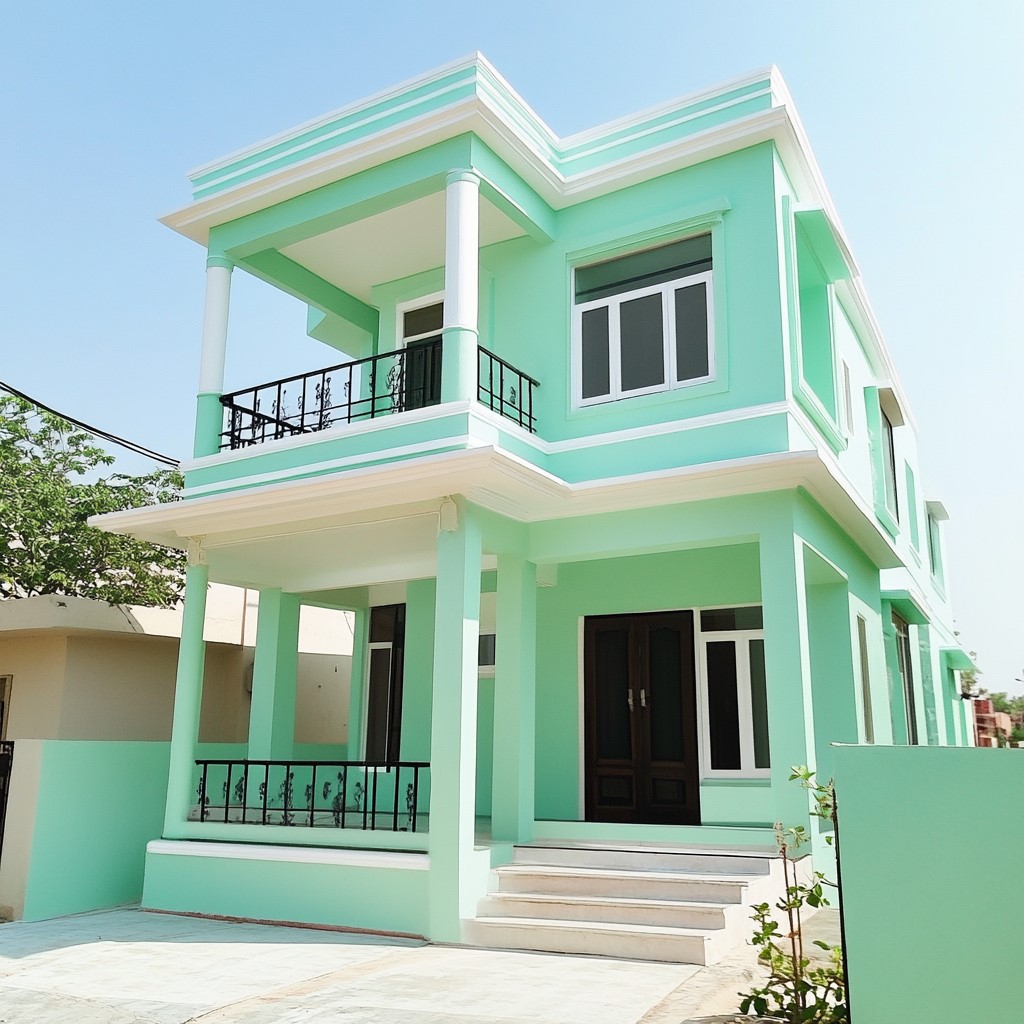
Mint green is fresh and vibrant, perfect for adding a lively yet soothing touch to your home. It works well with white or beige accents, creating a crisp and clean appearance that's full of life.
Exterior House Paint Suggestion #37: Red
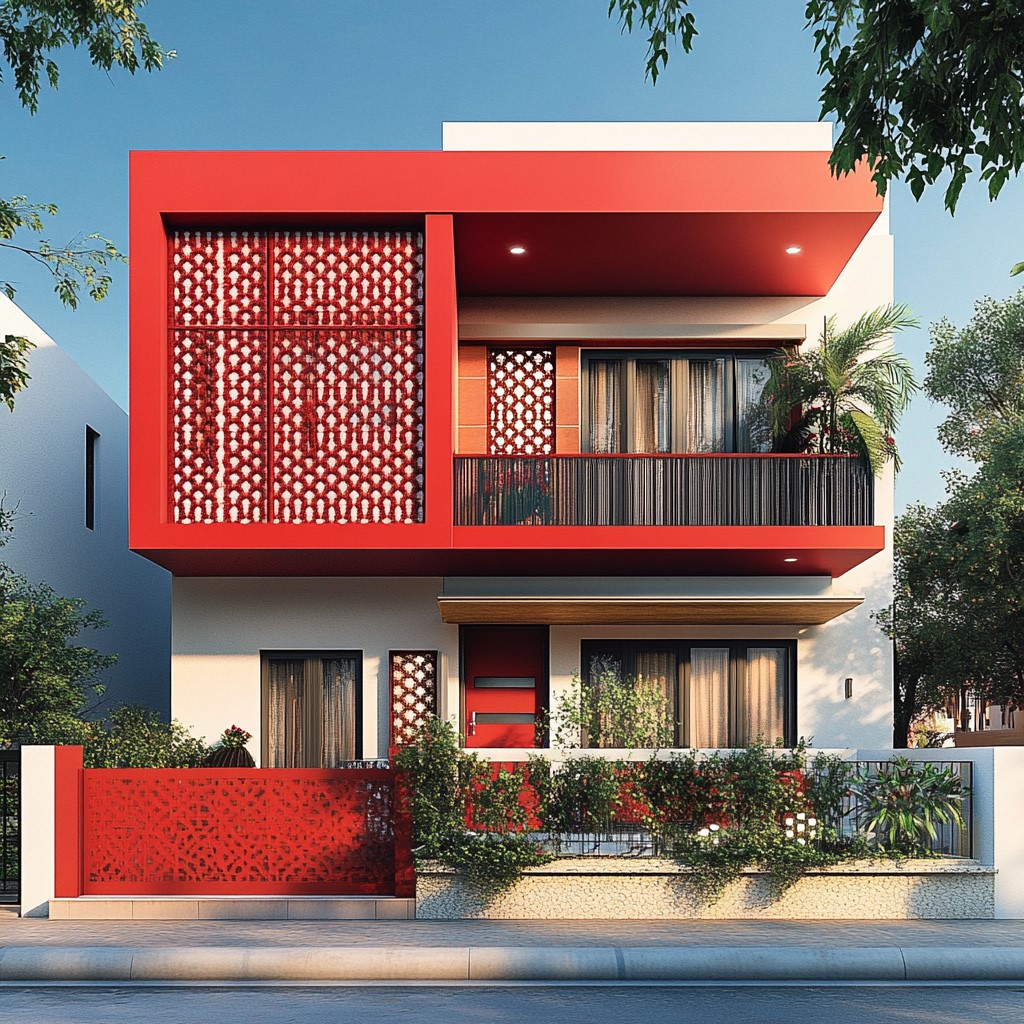
A red house signifies confidence and pride. It's dynamic and eye-catching, ideal for those who aren't afraid to stand out. Pair with white or black trims for a classic look that’s always in style.
{walls}
Exterior Paint Colour for Indian Home #38: Brown
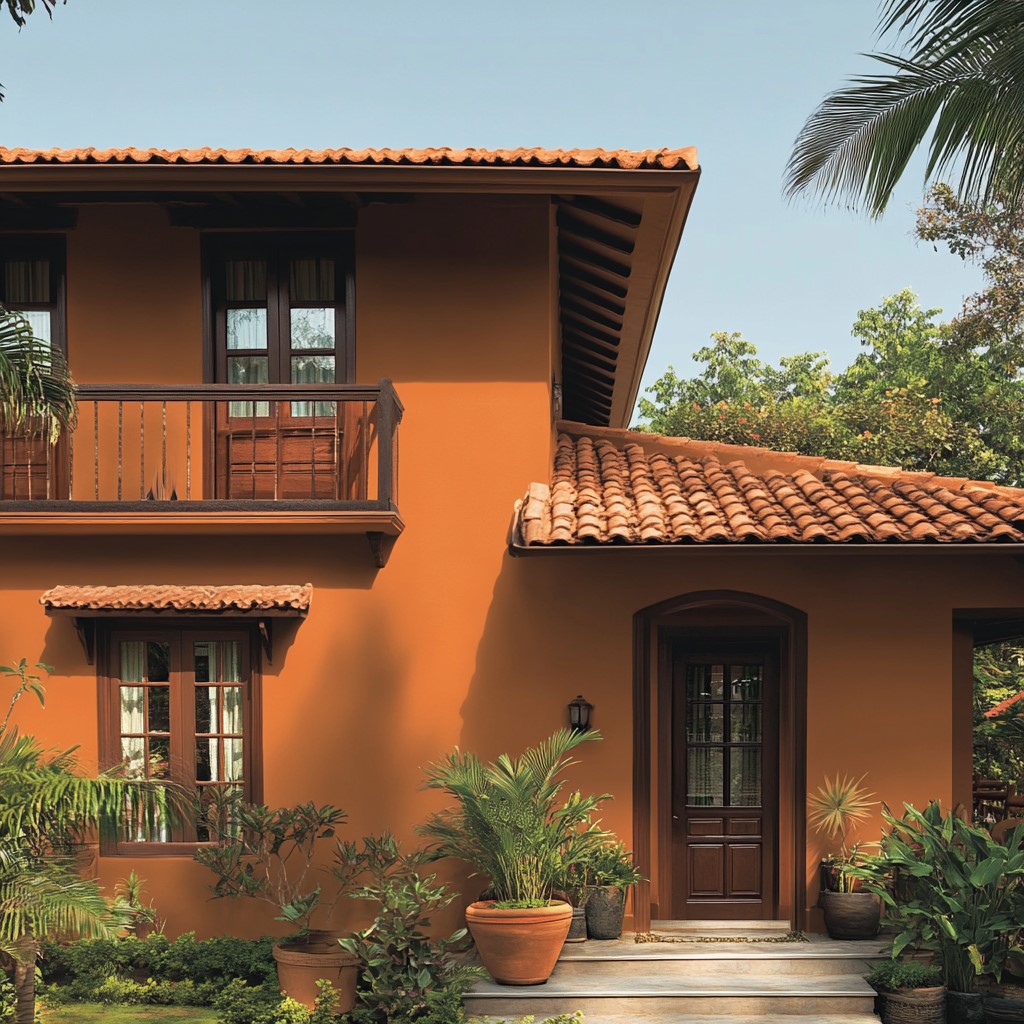
Brown house colour offers a natural, earthy base that exudes stability and reliability. It's great for homes that want to highlight traditional values and blend with their surroundings.
Exterior Paint Colour for Indian Home #39: Modern Beige

Modern beige is all about simplicity and elegance. This neutral shade pairs well with darker accents like chocolate brown or charcoal, offering a contemporary look that is both warm and inviting.
Simple Exterior House Colour Shade #40: White

A pure white exterior provides a timeless, bright, clean look. Enhance this classic beauty with contrasting dark shutters or colourful doors to add character and charm.
{walls}
Simple Exterior House Colour Shade #41: Chocolate Brown

Combining shades of brown can result in a richly textured look that exudes warmth and comfort. It's an ideal choice for homes set in areas with abundant natural beauty.
Exterior Paint Scheme #42: Gothic Black
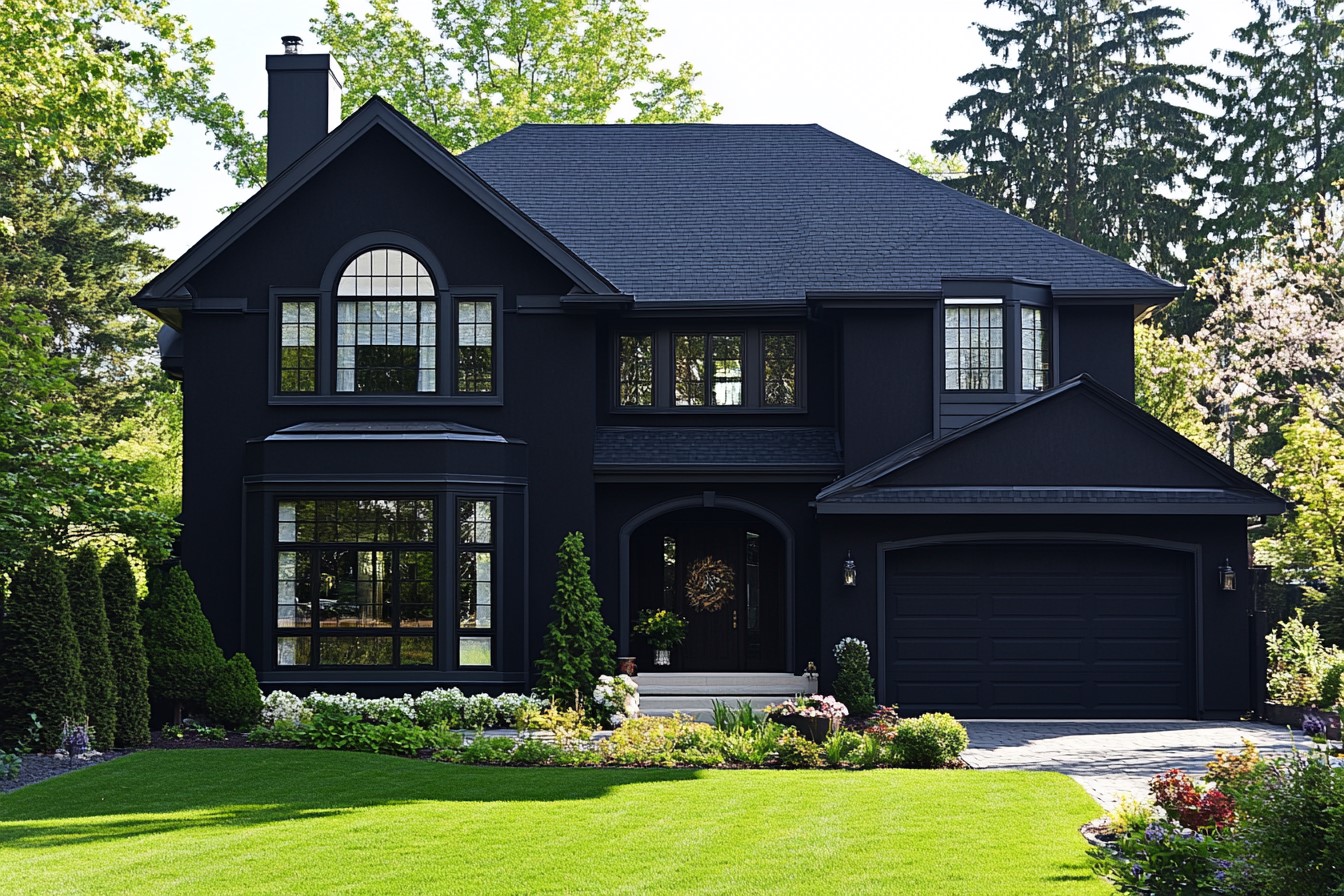
Bold and dramatic, black exteriors make a powerful statement. This house colour combination works well with contemporary homes and can be softened with light-coloured trims or made even more striking with metallic accents.
Exterior Paint Scheme #43: Navy Blue

Navy blue is deep and calming, often associated with stability and sophistication. It looks stunning with white trims, offering a nautical vibe that is a classic Indian house colour combination for the outside walls.
{walls}
Exterior Wall Paint Design #44: Dark Teal
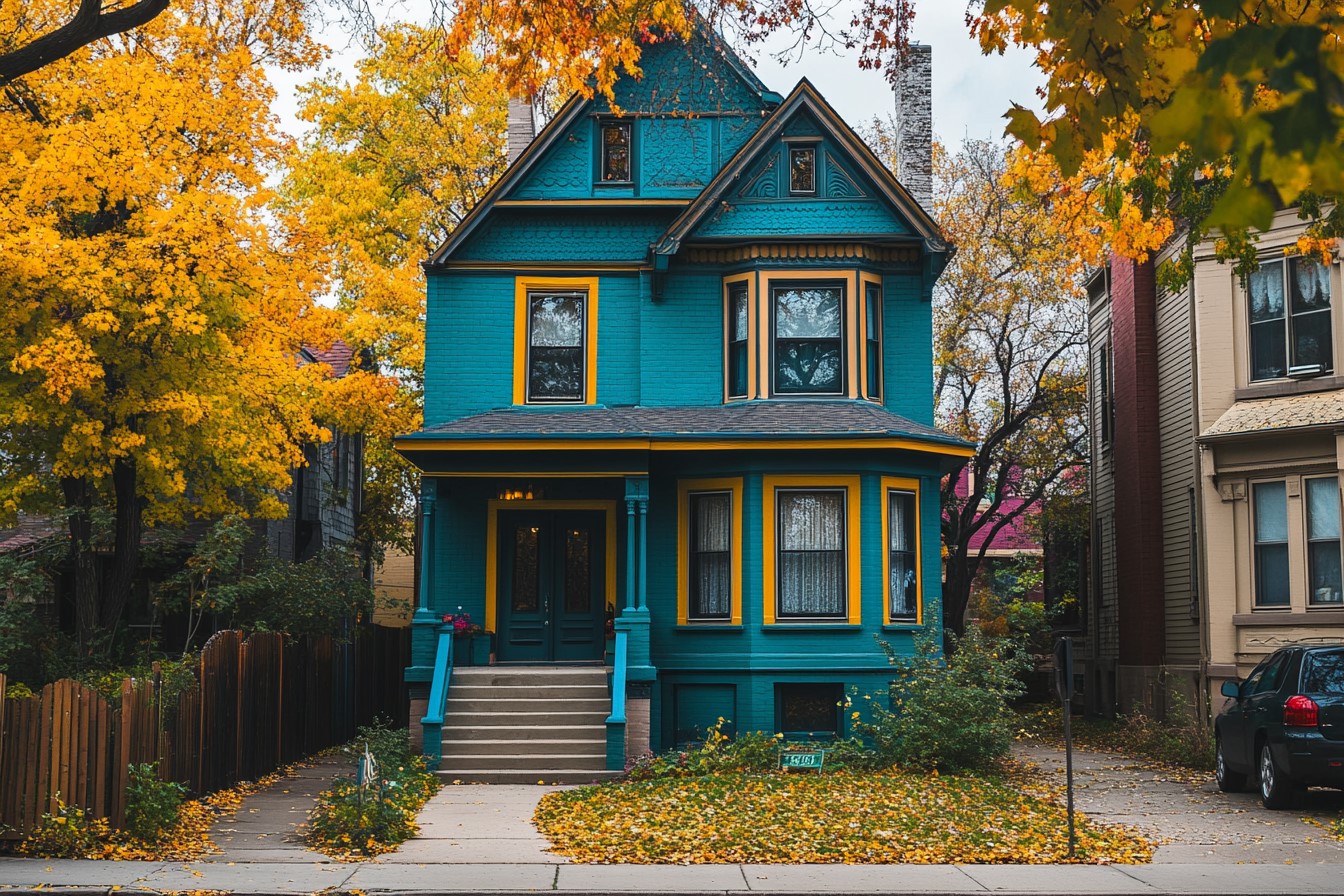
Dark teal is bold and sophisticated, offering a feel of drama and luxury to your home's exterior. It pairs beautifully with creamy whites or can be contrasted with other lively colours for a more spirited look.
Exterior Wall Paint Design #45: Mustard Yellow

Mustard yellow is bold and inviting, perfect for adding a splash of sunshine to your home's exterior. It looks fantastic with grey or blue trims, offering a chic and cheerful look.
Outside Paint Colour for Home #46: Maroon
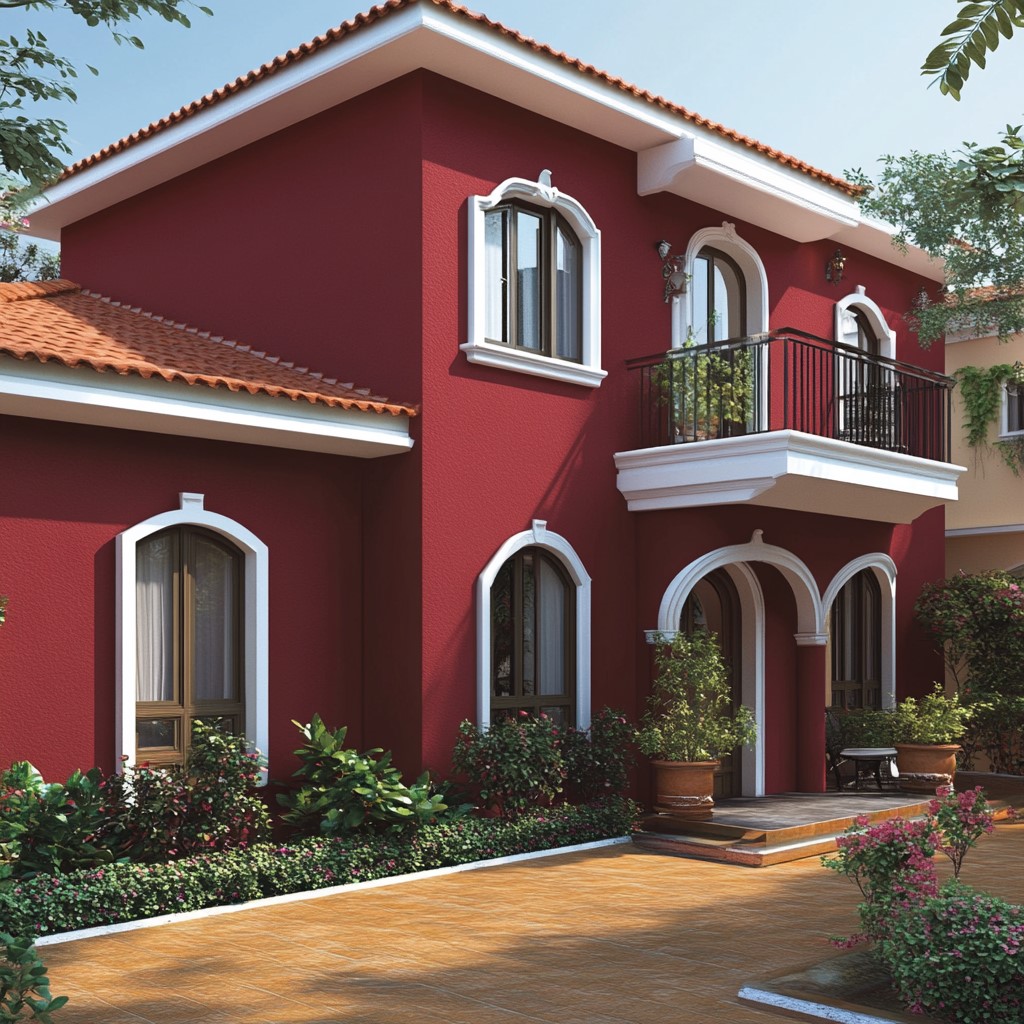
Maroon is a deep hue that gives a sense of intricacy and richness. Its warm, earthy tone is perfect for crafting an exterior that captures attention and does so in a refined and understated manner.
{walls}
Outside Paint Colour for Home #47: Pale Yellow
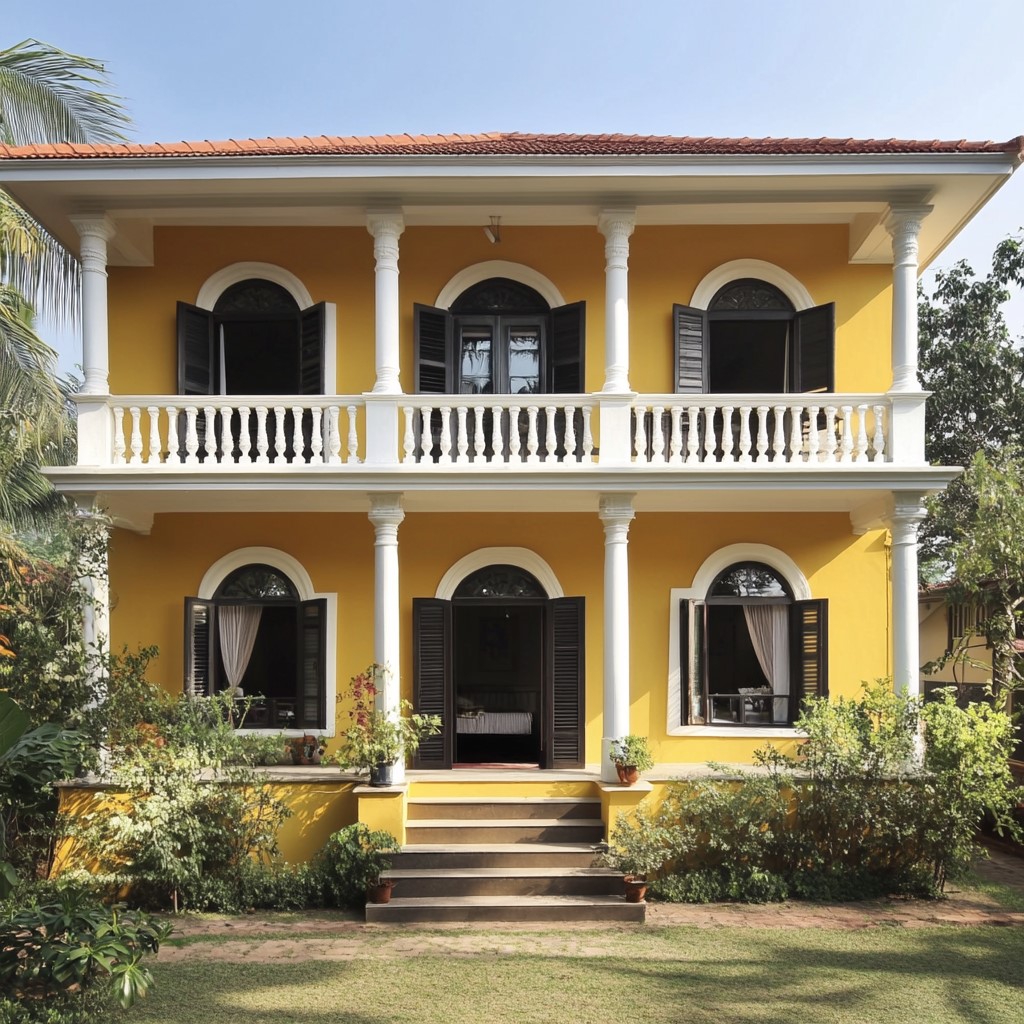
Pale yellow is light and airy, perfect for creating a welcoming and cheerful exterior. It pairs beautifully with white trim and darker accents to create a balanced, attractive facade.
Tips For Exterior Painting
There are some things that will help keep that exterior house colour for a longer time.
Here are some essential tips for choosing and applying exterior paint to ensure a beautiful and lasting finish'
- Blend with Nature: Choose colours that complement the surrounding landscape, like soft greens or earthy tones, for a natural and inviting look.
- Sample Before You Commit: Always test a few colours on your walls. Natural light can dramatically change how they appear throughout the day.
- Think Long-Term: Opt for weather-resistant paints that can endure rain, sun, and wind, ensuring your home stays stunning for years.
- Highlight the Details: Use a contrasting shade for trims, doors, or shutters to make your home's architecture stand out beautifully.
- Stay Neutral: Classic shades like white, grey, or beige rarely go out of style and keep your exterior looking timeless.
- Create a Colour Balance: Follow the 60-30-10 rule'60% for the main colour, 30% for a secondary shade, and 10% for bold accents.
- Invest in Quality: High-quality paints with UV and mould resistance not only look better but also last longer.
- Pick the Perfect Day: Paint during mild, dry weather to avoid uneven drying and achieve a smooth finish.
Wrapping It Up
It can be difficult to choose one shade when you are provided with so many options. It’s not easy to settle down on just one shade. We suggest a double house colour combination for the exterior in such situations. From basic and aesthetically pleasing to vibrant and bold choices, there is something for everyone.
Contact Interior Company designers and transform your house exterior from average to amazing.
*Images used are for representational purposes only. Unless explicitly mentioned, the Interior Company does not hold any copyright to the images.*
Ready for a home transformation?
Let our designers assist you!
Recent Posts
Some shades that are the best house colours for the exterior are blue and beige and slate grey and black.
It is best to match your house’s compound wall to the home’s exterior colour. This helps create uniformity and gives a good overall look.
Some best exterior house colours for 2024 include off-white, light grey, white, mid-tone blues, and warm greys.
The 60-30-10 rule is a classic decorating concept where 60% of a room is dominated by the main colour, 30% by a secondary colour, and 10% by an accent colour, creating a balanced palette.
The best colour depends on your home’s style, location, and taste. Neutral shades like white, beige, or grey are timeless and suit most homes. Pastels or earthy tones also work well. For a bold look, you can try navy blue or dark green.
Acrylic paint is often considered the best for exteriors. It is durable, weather-resistant, and retains colour well. Opt for paint specifically labelled for exterior use to withstand harsh conditions.
High-quality acrylic latex paint is known for its long lifespan. It resists cracking, peeling, and fading better than other types of paint.
On average, exterior paint lasts 5 to 10 years, depending on the paint quality, climate, and surface preparation. In harsh weather conditions, it may need repainting sooner.
For Vastu, light and soothing colours like white, cream, or light yellow are considered auspicious. These colours attract positive energy and keep the home environment peaceful.
Typically, two coats are recommended for the exterior colour of the home to ensure proper coverage and durability. A primer coat is also necessary for better adhesion and a smooth finish.
The best time is during dry weather with moderate temperatures. Spring and early autumn are ideal as they have fewer chances of rain and humidity.
Light colours like off-white, cream, or pale blue are popular for simple Indian houses. These colours reflect heat and keep the house cooler, especially in warmer climates.
To choose the right exterior colour combination, start by considering your surroundings. Decide whether you want your house to blend with nature or stand out subtly. Select a primary colour for the main walls and complement it with trims or accents. Look for inspiration in pre-designed exterior palettes or from houses in your neighbourhood. Also, keep the colours of your roof, driveway, and landscaping in mind to ensure everything works together.
When selecting an exterior house colour, think about your home’s architecture and how it fits into the neighbourhood. Test small samples on the walls to see how they look at different times of the day. Prioritise durable paints that can withstand weather changes. Finally, consider the climate—lighter colours reflect heat and are great for hot areas, while darker shades can add warmth in cooler climates.
Acrylic latex paint is the most popular for exteriors due to its durability, ease of application, and ability to resist weathering.
Related Category
- Door Design
- False Ceilings
- Lighting
- Paint and Color
- Walls and Texture











